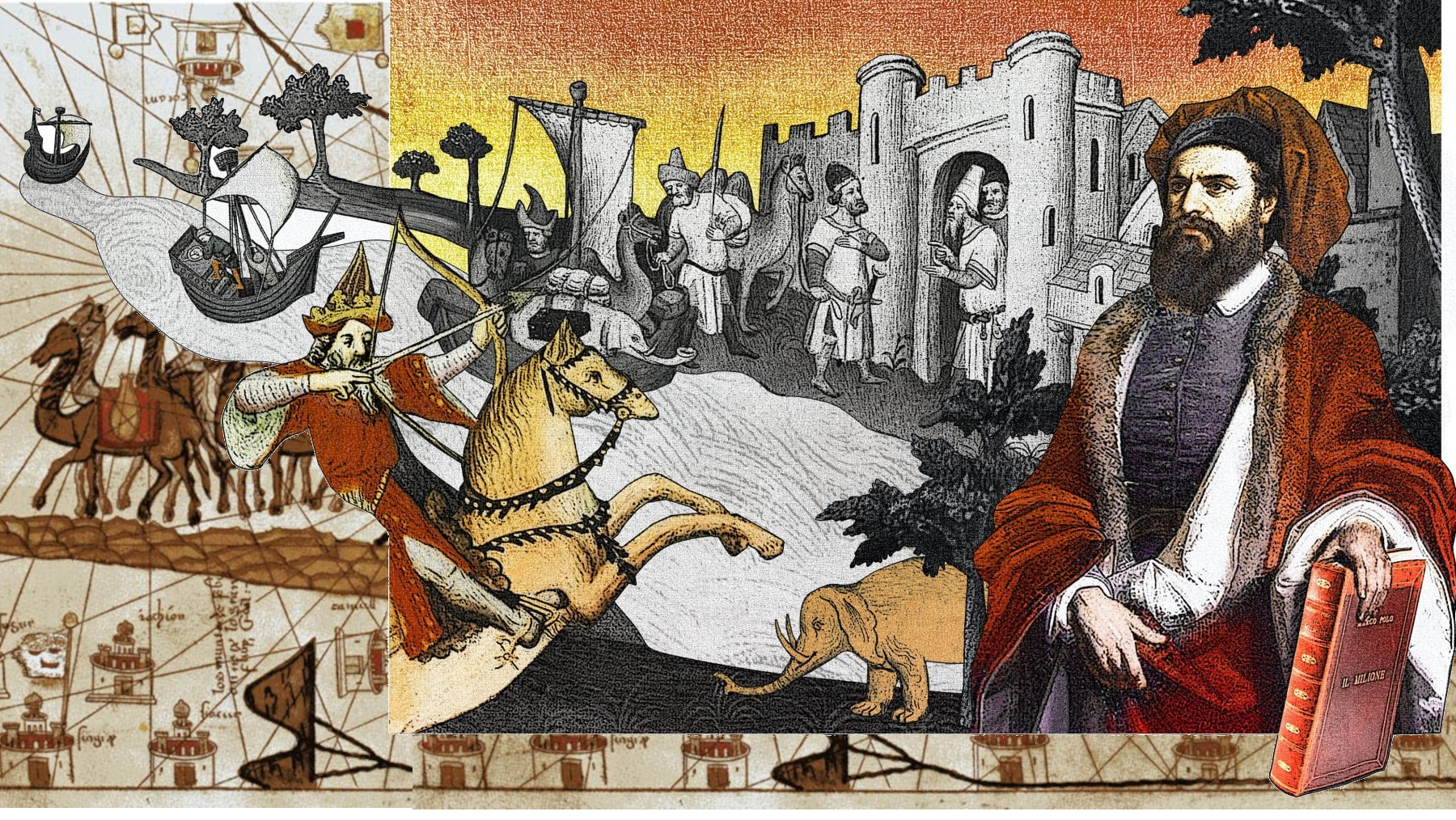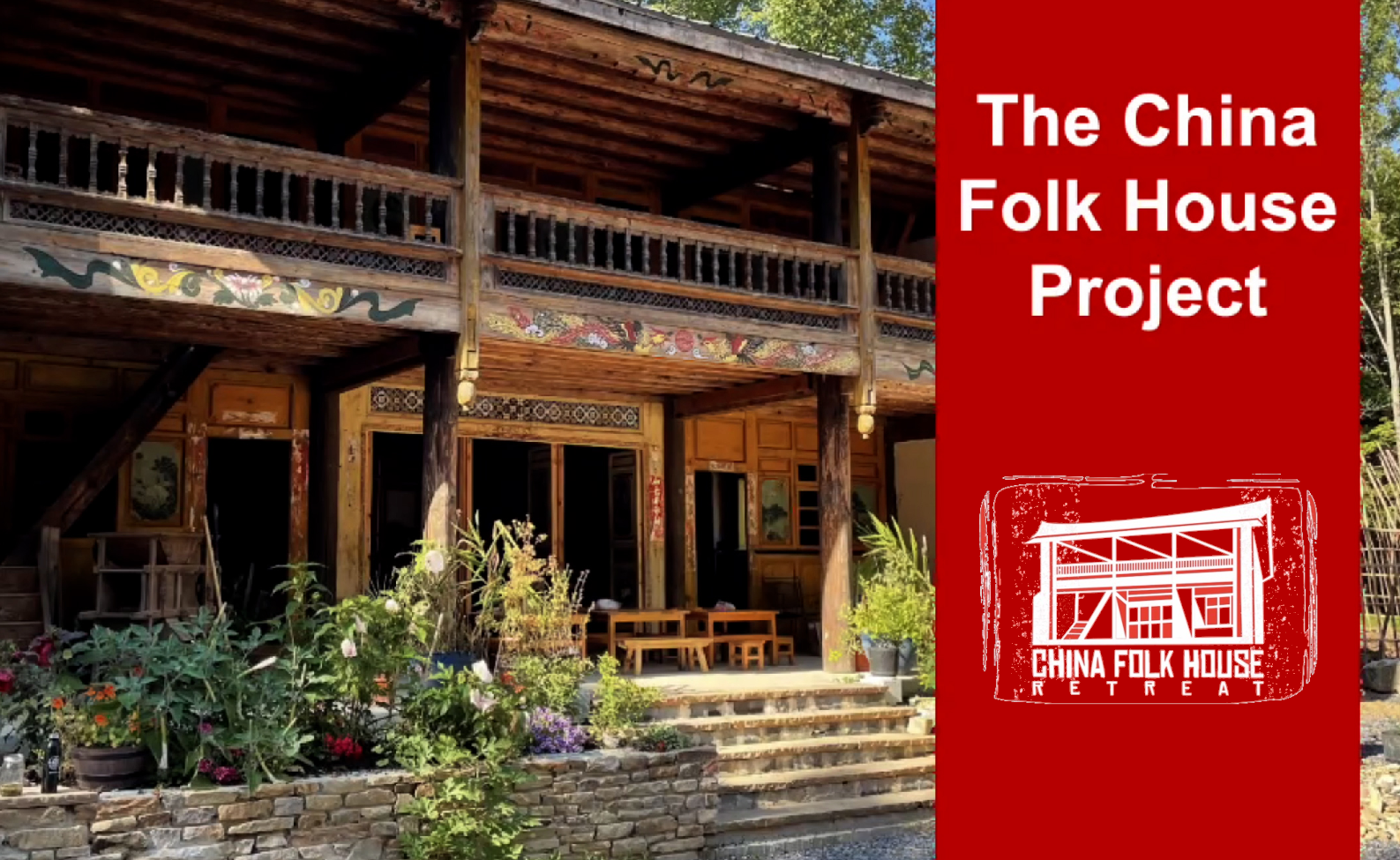My channels - Kulturaustausch Ost-West|东西方文化交流|East-West cultural exchange|Échange culturel Est-Ouest
- Portrait gravé en frontispice de l'empereur Quianlong en premier volume.
- Le volume VII est une réimpression de l'Art militaire des Chinois d'Amiot (Paris, 1772), la première traduction dans une langue européenne de l'ancienne stratégie militaire chinoise.
- Le volume XII est entièrement consacré à la vie de Confucius avec de superbes planches.
Il Milione è il resoconto dei viaggi in Asia di Marco Polo, intrapresi assieme al padre Niccolò Polo e allo zio paterno Matteo Polo, mercanti e viaggiatori veneziani, tra il 1271 e il 1295, e le sue esperienze alla corte di Kublai Khan, il più grande sovrano orientale dell'epoca, del quale Marco fu al servizio per quasi 17 anni.
Il libro fu scritto da Rustichello da Pisa, un autore di romanzi cavallereschi, che trascrisse sotto dettatura le memorie rievocate da Marco Polo, mentre i due si trovavano nelle carceri di San Giorgio a Genova.
Rustichello adoperò la lingua franco-veneta, una lingua culturale diffusa nel Nord Italia tra la fascia subalpina e il basso Po. Un'altra versione fu scritta in lingua d'oïl, la lingua franca dei crociati e dei mercanti occidentali in Oriente, forse nel 1298 ma sicuramente dopo il 1296. Secondo alcuni ricercatori, il testo sarebbe poi stato rivisto dallo stesso Marco Polo una volta rientrato a Venezia, con la collaborazione di alcuni frati dell'Ordine dei Domenicani.
Considerato un capolavoro della letteratura di viaggio, Il Milione è anche un'enciclopedia geografica, che riunisce in volume le conoscenze essenziali disponibili alla fine del XIII secolo sull'Asia, e un trattato storico-geografico.[5] È stato scritto che «Marco si rivolge a tutti quelli che vogliono sapere: sapere quello che c'è al di là delle frontiere della vecchia Europa. Non mette il suo libro sotto il segno dell'utile, ma sotto il segno della conoscenza».
Rispetto ad altre relazioni di viaggio scritte nel corso del XIII secolo, come la Historia Mongalorum di Giovanni da Pian del Carpine e l'Itinerarium di Guglielmo di Rubruck, Il Milione fu eccezionale perché le sue descrizioni si spingevano ben oltre il Karakorum e arrivarono fino al Catai. Marco Polo testimoniò l'esistenza di una civiltà mongola stanziale e molto sofisticata, assolutamente paragonabile alle civiltà europee: i mongoli, insomma, non erano solo i nomadi "selvaggi" che vivevano a cavallo e si spostavano in tenda, di cui avevano parlato Giovanni da Pian del Carpine e Guglielmo di Rubruck, ma abitavano città murate, sapevano leggere, e avevano usi e costumi molto sofisticati. Così come Guglielmo di Rubruck, invece, Marco smentisce alcune leggende sull'Asia di cui gli Europei all'epoca erano assolutamente certi.
Il Milione è stato definito come "la descrizione geografica, storica, etnologica, politica, scientifica (zoologia, botanica, mineralogia) dell'Asia medievale".Le sue descrizioni contribuirono alla compilazione del Mappamondo di Fra Mauro e ispirarono i viaggi di Cristoforo Colombo.
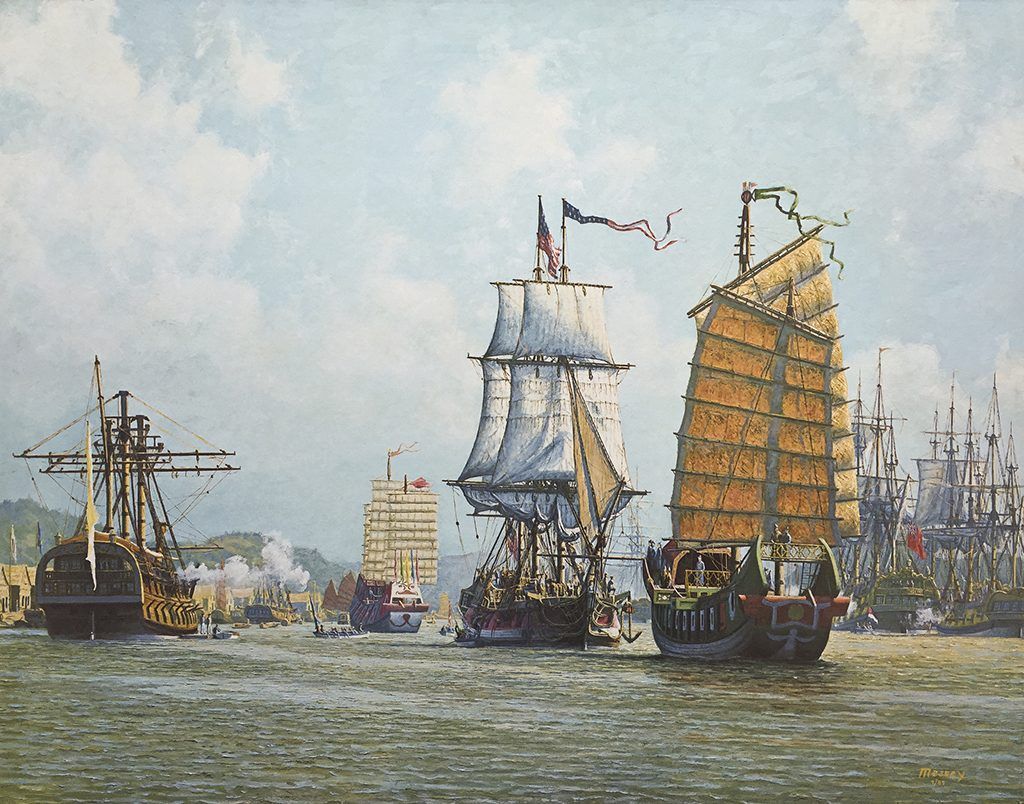
1776年7月4日是美国建国,然后经历从1775年至1783年长达8年的独立战争,迫使英国承认美国独立。为走出战争后经济危机和英国贸易禁运的带来的困境境,美国银行家、商人罗伯特·莫里斯建议政府派船到中国寻求新的商机,帮助美国渡过难关。这是一个发展中的国家,对一个发达国家的期盼。
“中国皇后号”,向大清致敬的美国船
说干就干,莫里斯联合纽约商界著名人士,投资12万美元,共同购置了一艘360吨的术制军舰,配有各种新式航海设备。为讨好中国,他们将这艘改装商船起名为“中国皇后号”(The Empress Of China)。莫里斯将从海军中挑选出来的格林聘为船长,并邀请山茂召作为他的商务代理人。
独立战争胜利的第二年,1784年1月30日,美国政府给该船颁发加盖了美利坚合众国大印的航海证书,因为无法估计到中国当时的国体政情,美国人在证书上空前绝后地写上了无数头衔:君主、皇帝、国王、亲王、公爵、伯爵、男爵、勋爵、市长、议员……为隆重起见,甚至连起航日期也精挑细选,最后选定了一个当时公认的“黄道吉日”:1784年2月22日——首任总统华盛顿的生日。一条中等级美国商船就这么冒险驶上了通往东方的航路。
今天的中国人了解“中国皇后号”多是通过美国人的一部专著。1984年美国费城海事博物馆,在纪念“中国皇后号”首航广州200周年的时候,出版了菲利普·查德威克·福斯特·史密斯《中国皇后号》一书。此书引起了早就忘了“中国皇后号”这件事的中国人的兴趣,2007年广州出版社出版了《中国皇后号》的中文版,公众这才知道,“海上丝绸之路”还有一段中美贸易传奇。
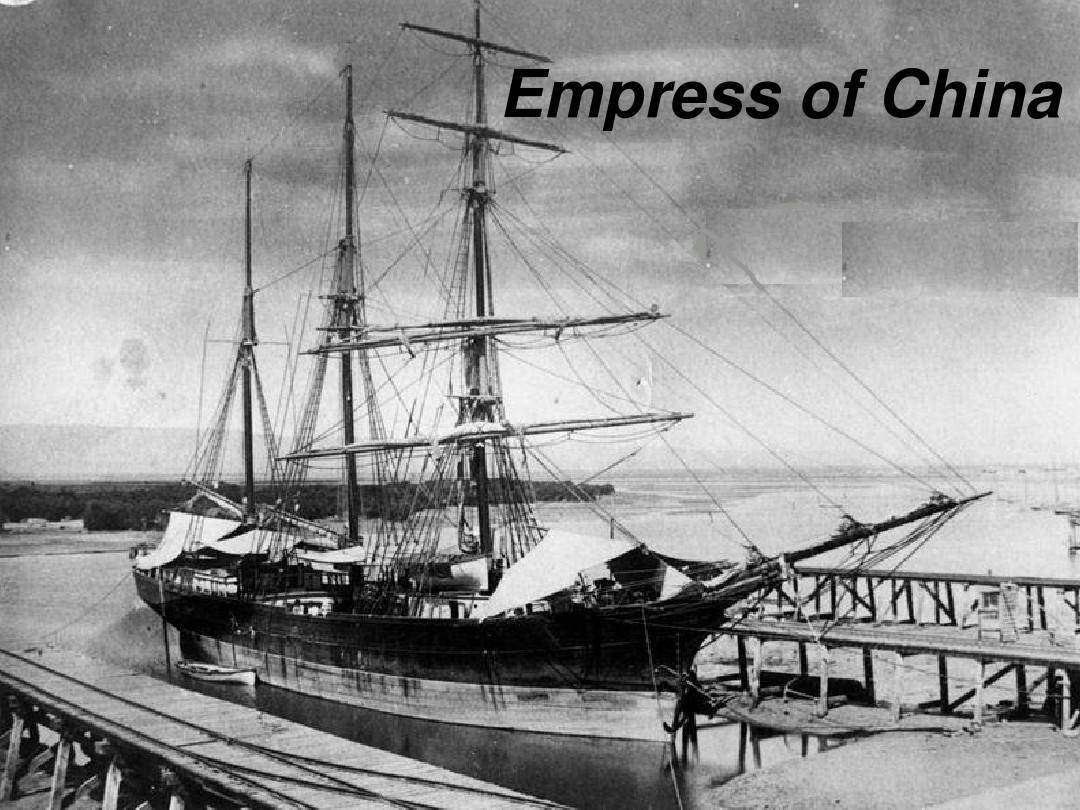
停泊在纽约的“中国皇后号”
那么,大清国与美国当时相互都有什么贸易需求呢?
据记载,当年“中国皇后号”载着473担两洋参、2600张毛皮、1270匹羽纱、26担胡椒、476担铅、300多担棉花及其他商品——驶向中国。后来,澳门出版《中国丛报》特别介绍过西洋参在中国销售的重要性:“产于鞑靼和美洲,从美洲又出产到中国,大多数医生把它看成灵丹妙药,也成为鞑靼皇帝的财物,每年赐给下面宠信的臣子……”,此后,美国商船,每来中国必定带西洋参到中国销售。
1784年8月,“中国皇后号”终于到了当时作为中国海上门户之一的澳门,在这里取得了一张盖有清廷官印的“中国通行证”,获准进入珠江,在大清领航员的带领下,“中国皇后号”经过一天的航行,抵达广州的黄埔港。“中国皇后号”呜礼炮十三响(代表当时美国的十三个州)。格林船长曾有一则这样的手记:“‘中国皇后号’荣幸地升起了在这海域从未有人升起或看见过的第一面美国国旗,这一天是1784年8月28日。”当时的两洋画家创作了一幅《“中国皇后号”到达广州》,记录下了这一中国美海上贸易的重要场景。

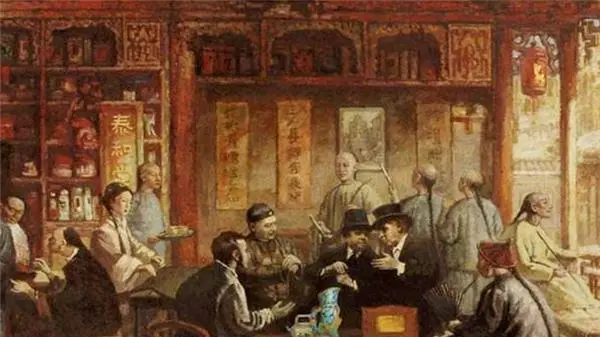
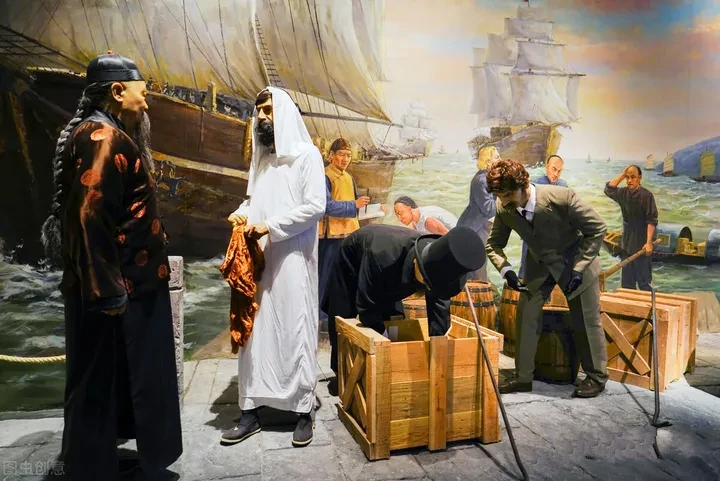
欧洲铜版画中的广州十三行风景
4个月后,“中国皇后号”的货物已全部脱手,并采办了一大批中国货:红茶2460担、绿茶562担、瓷器962担,还有大量丝织品、象牙扇、梳妆盒、手工艺品等等,船长格林本人,还购买了男士缎裤300余条、女士长袖无指手套600副、象牙扇100把。美国商人心满意足地踏上归程。
1785 年 5 月 11 日,“中国皇后号”回到纽约,往返历时 15 个月。“中 国 皇后号 ”回到纽约后,立刻刊登出售 中 国商品的广告。结果, 12 万美元购得的中国货,立即销售一空。华盛顿本人也购买了 302 件瓷器及绘有图案的茶壶、精美象牙扇等中国货。这些物品仍有部分保留在美国宾州博物馆和华盛顿故居内(第二次“中国皇后号”的中国之行,华盛顿夫人特别点名要买一批中国白瓷) 。
这次航行的美同商人获利只有3万多美元,但它开启了新的贸易窗口,挣脱了英国的经济封锁,这对当时的美国实在是太重要了。所以,相关人等被纷纷提拔,莫里斯一跃成为美国联邦政府第一任财政部长;船长格林则成为后来与中国通商的著名顾问,而商务代理人山茂召更是声名鹊起。山茂召回到美国后,立刻向当时联邦政府的外交国务秘书约翰·杰伊递交了“‘中国皇后号’访华报告”,报告赞许了中国人的好客和宽厚,极力倡导对华贸易。国会经讨论后,面向全国发布了对此次航行的表扬信,一时间,引发了全美的“中国热”。
“广州”:美国小城最喜欢起的名字
清初,以广州为目的地的海上贸易航线已有多条,“中国皇后号”的到来,又增加了一条美国直达广州的航线。作为当时中国主要对外贸易的唯一港口的广州,则成为吸引美国的最著名城市。
29岁商务代理人山茂召在他的首航中国日记中说:“虽然这是第一艘到中国的美国船,但中国人对我们却非常的宽厚。最初,他们并不能分清我们和英国人的区别,把我们称为‘新公民’,但我们拿美国地图向他们展示时,在说明我们的人口增长和疆域扩张的情况时,商人们对我围拥有如此之大的,可供他们帝国销售的市场,感到十分的高兴。”
1786年1月,山茂召因对中美贸易的贡献被美国任命为驻广州领事,山茂召一任5年,此间,不仅有几百吨的大商船前往中国,连一些几十吨的小船也载着有限的货物驶向广州,在通往中同的航线上,美国商船绵延不断,成为一大奇观。美国商船多次来广州的成功贸易,吸引了更多的美国商人投资这一贸易,波士顿商人竞发行每股300美元的大额对华贸易股票。
1793年2月,山茂召踏上了第4次中国之旅。11月2日,山茂召一行从孟买顺利到达了广州,但是次年3月他乘坐“华盛顿号”返航时,肝病恶化,客死返航途中,时年39岁,从而结束了他10年问往返中美的辉煌贸易生涯。而此时,中美海上贸易已经迅速超过荷兰、丹麦、法国,仅次于英国,排在世界的第二位。
由于当时中国对外贸易窗口,只剩下广州一地通商,所以,广州成了成功与繁荣的代名同,令没能来中国的美国人艳羡不已。因此,很多美国城镇就以“广州”(Canton)命名,而显其时尚。据说,美同的第一个“广州”,出现于1789年的乌萨诸塞州东部诸福克县的广州镇。后来,义有了俄亥俄州东北部的“广州”,它是美国最大的“广州”。美国学者乔治·斯蒂华特在一本研究美国地名的著作中曾提到:当时,在美国23个州里,都有以广州命名的城镇或乡村。与“广州”大热相反的是,大清最有学问“一代硕学”阮元在当两广总督时,于清嘉庆二十二年(1817年)编著《广州通志》,竟然还把美国说成是“在非洲境内”。
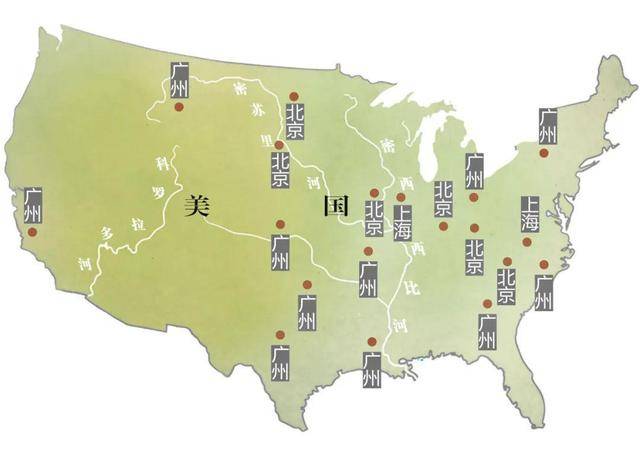
美国山寨中国的地名
藏在方尖碑里的里程碑
现在到美国旅游的人,都少不了到华盛顿转一转。但很少有人注意到华盛顿纪念碑即著名的方尖碑里还有一段中国故事。此碑高169.045米,碑内有50层铁梯,也设有70秒到顶端的高速电梯,在纪念碑内墙镶嵌着188块由私人、团体及全球各地捐赠的纪念石,其中就镶嵌有一块中文石碑,碑高1.6米,宽1.2米,它是“中国皇后号”首航中国70年后,于清咸丰三年(1853年)由中国漂洋过海,赠予美国,作为送给华盛顿纪念碑的特殊礼品。
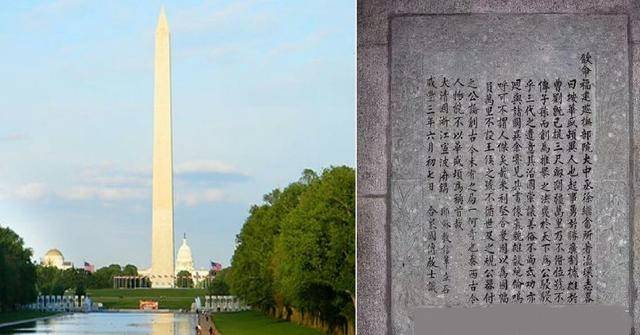
华盛顿纪念碑和纪念碑上镶嵌的中文碑
需要指出的是,此碑并非大清政府所送,碑文落款:“大清国浙江宁波府镌,耶稣教信辈立石,合众国传教士识。”这位刻石的宁波知府,名叫毕永绍,上任不到一年,就离职了。碑文正文是由美国传教士丁韪良推荐,它来自曾任福建巡抚的徐继畲所著《瀛环志略》。此书初刻于道光二十八( 1848年),后来被清廷查禁了。徐继畲是中国最早的“美国通”,他第一次把华盛顿介绍到了中国:“华盛顿,异人也。起事勇于胜、广,割据雄于曹、刘。既已提三尺剑,开疆万里,乃不僭位号,不传子孙,而创为推举之法,几于天下为公,骎骎乎三代之遗意。其治国崇让善俗,不尚武功,亦迥与诸国异”、“呜呼,可不谓人杰矣哉!米利坚合众国以为围,幅员万里,不设王侯之号,不循世及之规,公器付之公论,创古今未有之局,一何奇也!泰丙古今人物,能不以华盛顿为称首哉!”这两段赞美华盛顿话,通过立石刻碑,送到美国,也让美国人第一次知道了中国还有人如此赞美美国领袖。
如果我们细想一下,徐继畲的《瀛环志略》,仅比魏源六十卷本《海国图志》晚了1年。但在“制夷”与“开眼向洋”的方向上,则大有不同,而比之托克维尔的1840年完成《论美国的民主》仅晚了8年。
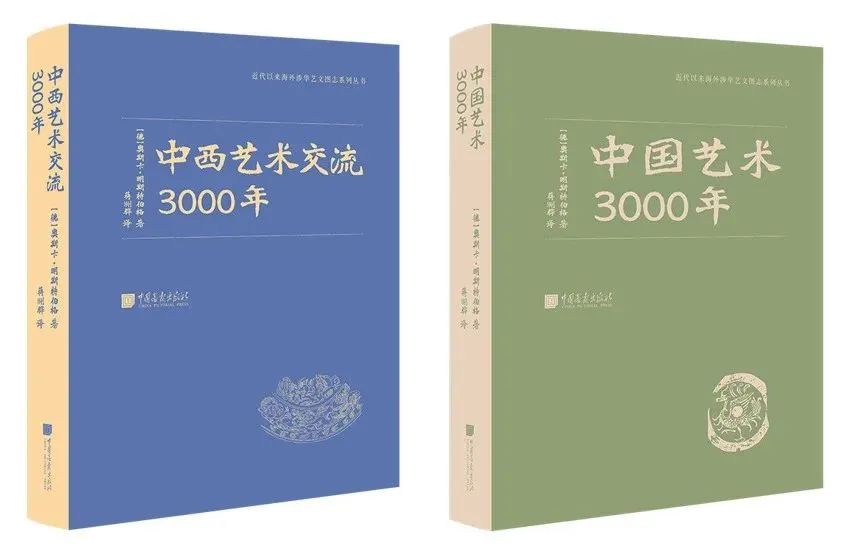
自西方历史上著名的旅游书《马可·波罗游记》诞生以后,西方与中国的往来就日渐频繁: 从15世纪末起,中国的瓷器在欧洲大受欢迎,紧接着是青铜器、漆器、象牙雕刻、绘画及家具,中国的茶叶和丝绸也成了欧洲市场上的紧俏商品。数以千计的冒险家、士兵、传教士、海员及学者,当然人数最多的是商人,来到中国。之后将无数艺术珍品带回欧洲,瞬间席卷交易市场,而各家旧大陆博物馆都得以极大地丰富了藏品,可惜它们并未对藏品质量进行筛选。这些被带回的艺术品大多被卖给了一些精致讲究的享乐主义者,而不是艺术家或艺术研究者。 由于仍缺乏对中国艺术的研究,商人购买时并不在意作品的艺术性,是否极具异域风情才是他们的评判标准。
19世纪,东亚艺术史学家奥斯卡·明斯特伯格在环游世界的旅行之后,在一次聚会与深谙艺术的同好们交流中,迸发灵感: 他计划收集到尽可能丰富的研究资料,整理归类现有的珍贵图片,在客观描述规模宏大的文献资料以外,对原作给出一些自己的评论,来还原一个较为完整的中国艺术史。
奥斯卡·明斯特伯格(Oskar Münsterberg)出生于但泽(现属波兰)的一个犹太人家庭,父亲莫里茨·明斯特伯格是一位商人,母亲安娜·伯恩哈迪是画家。父母的职业对他后来的发展道路有着极其深远的影响。明斯特伯格分别于慕尼黑和弗赖堡修习国民经济学和艺术史,从弗莱堡大学毕业后,他前往德国首都柏林,于1906年成为《德国民族报》总编。
三年后他转战莱比锡,就职成为一家出版社的社长。1912年,他重返柏林,主持哈格尔伯格出版社的主要工作。 在此期间,明斯特伯格曾多次因公来到东亚,对当地的人文产生浓厚兴趣并出版了一系列相关书籍。
第一部巨著《日本艺术史》(第一卷)于1904年问世,至1907年为止共出版三卷。 1895年发表论文《中国的改革——东亚历史政治与国民经济研究》,为他对中国艺术史的研究打下了坚实的基础,1910—1912年间,他的第二部煌煌巨著《中国艺术史》出版了。
《中国艺术史》是19世纪德国东亚艺术史学家奥斯卡·明斯特伯格的力作,系统阐释了中国辉煌博大的艺术史。 原著涵盖了从石器时代至清代的中国古代建筑、雕塑、绘画、青铜器、陶瓷、手工艺品等内容,共收录1034幅彩色图版及黑白插图和照片,每幅图片均详述器物名称、尺寸、收藏者信息等。
原著为德文版,分为两卷,分别于1910年、1912 年首次出版。两卷内容各有侧重。第一卷收录321幅黑白图版和15幅彩色图版,从历史的纵向发展,即从新石器时代至清末,诠释了中国艺术风格演化的逻辑和特质;作者又以佛教传入中国为分界线,通过中外古代石刻、青铜器、陶器、绘画、雕塑等作品,呈现了中西方三千年来在艺术上的对话交流。
第二卷分为建筑艺术和工艺美术两大部分,收录675幅黑白图版和23幅彩色图版,涵盖了中国古代建筑、青铜器、陶瓷、宝石制品、印刷品、织物、漆器与木器、琉璃、珐琅、犀角、玳瑁、琥珀、象牙等器物近1200件,通过艺术作品本身所展现的审美趣味,厘清中国艺术的发展脉络。
因原著两卷在内容上各有侧重,且论述角度不同,本次出版在保留原书完整内容的基础上,对编辑体例进行了调整,将原著两卷分别以《中西艺术交流3000年》和《中国艺术3000年》为名,单独成册出版。
在19世纪初,这部作品尝试系统地阐述中国艺术语言及其表现形式的发展历史,这在当时的学界应是史无前例的。 将其翻译、出版,对于促进学术研究和文化交流,以及了解和研究近代中国问题具有重要参考价值。

1873年轮船招商公局开局油画,图片来自招商局历史博物馆
唐廷枢(1832-1892),字建时,号景星,1832年5月19日出生于广东省香山县唐家村(今珠海市唐家湾镇)。香山自南宋始设县,主要地域包括今广东省中山市、珠海市和澳门特别行政区,是粤港澳大湾区的重要组成部分。香山县历史悠久,自古以来就是人杰地灵的滨海地区。19世纪以来,沐近代化风气之先,香山造就了一批与近代中国社会变迁息息相关的历史人物群体,他们在不同的领域为中国近现代化做出了重要贡献,形成了香山独特的历史人文遗产。唐宝臣家族的唐廷枢就是其中的重要代表人物。唐廷枢先后在澳门、香港马礼逊学校接受西式教育,后在香港政府、上海江海关担任翻译,接着在英商怡和洋行担任买办。受李鸿章赏识,他于1873年开始担任轮船招商局总办,不久又创办开平矿务局并任总办。唐廷枢是近代中国重要历史人物之一,是较早接受西式教育的中国人,近代著名买办,洋务运动的代表人物之一,更是洋务派实业家,中国民族保险、铁路机车、水泥工业之父。

唐廷枢肖像,图片来自《怡和洋行:175周年纪念特刊》
澳港求学之路:接受西式教育
唐廷枢的父亲唐宝臣(字广善,号宝臣,1799-1864)早年是澳门的雇员,为了让自己的儿子有好的前程,他将三个儿子唐廷桂(唐廷植一名为讹传)、唐廷枢和唐廷庚先后送入马礼逊学校(Morrison Education School)就读。1839年,唐宝臣的长子、唐廷枢之兄唐廷桂进入澳门马礼逊学校,分入第一班,与容闳同班;次子唐廷枢于1841年进入该校,分入第二班。1842年11月,澳门马礼逊学校迁往香港,唐廷桂和唐廷枢及同乡容闳、黄胜、黄宽随同前往。1843年,唐宝臣的三子、唐廷枢之弟唐廷庚进入香港马礼逊学校,分入第三班。

澳门马礼逊学堂,图片来自《中国第一所新式学堂:马礼逊学堂》
马礼逊学校为适应中国青年的需求,实行中英双语教学。因此,唐廷枢进入学校后,一方面学习汉语语言和中国传统文化知识,另一方面将更多的时间和精力花费在学习英语语言和近代西学知识上。唐廷枢英语水平提升的同时,还较系统地接受了西方近代先进的科学技术教育,使得他对近代科技和工业等有了初步了解和认识。随着知识的不断积累,唐廷枢逐渐成长为既懂中学又谙西学的近代新式人才。这些为其将来投身和开创中国工商业事业储备了知识。中国近代洋务运动风云人物丁日昌曾夸奖他“于各国情形以及洋文洋语罔不周知”。唐廷枢如此受赞,离不开他在马礼逊学校的学习。
港沪工作实践:从词典专家到著名买办
1849年,香港马礼逊学校停办,唐廷枢进入理雅各(James Legge,1815-1897)主持的香港伦敦传道学校(The London Missionary Society School)继续学习。1850年,他离开学校,利用自己的英语优势进入香港政府担任英语翻译。1851年,他在香港巡理厅当上一名翻译,1853年升任为正翻译,1856年代理香港大审院华人正翻译。比香港开埠晚一年的上海,开埠后得以快速发展,并逐渐成为中外商贸和文化交流的中心之一,吸引了国内外众多人才。1857年,唐廷枢离开香港前往上海,担任江海关(上海海关)副大写,1859年升任正大写及总翻译之职,1861年离开。唐廷枢这十年从事的都是英语翻译工作,这种英语知识的实践,极大地提升了他的英语应用能力。怡和洋行代理惠代尔(J. M. Whittall)称赞他“英文写得非常漂亮”,怡和洋行经理机昔(W. Keswick)称其“英文是这样地精通”,琼记洋行的费伦(R. I. Fearon)则说他“说起英语来就像一个英国人”。

1850年前后香港维多利亚港,图片来自网络
唐廷枢在学习和工作的过程中,逐渐意识到英语在晚清社会尤其是中外商贸中的重要性,并萌生了利用自己的英语优势编纂汉英词典的想法。于是,他在兄长唐廷桂和弟弟唐廷庚的协助下,编纂了汉英词典《英语集全》。《英语集全》如实地记录了19世纪中国和西方社会的若干现象,反映了中国传统社会和西方现代社会在物质、精神和文化方面的异同,是中西兼容的文化文本。它是中国现存最早的以“英语”命名的双语词典,也是中国人编纂的早期汉英词典中规模最大最完整的。

《英語集全》,图片来自澳门科技大学图书馆
唐廷枢离开江海关后,开始在长江流域代理怡和洋行生意。由于其出色的商业表现,1863年,他成为上海怡和洋行买办,直至1873年离开。唐廷枢任买办期间,为怡和洋行经理钱款、收购丝茶、办理航运、运销米盐等。此外,他也不断扩大自己的经营活动,附股洋行公司,任公正、北清轮船公司华籍董事,参与创办上海丝业、茶业公所和洋药局并任董事,同时也是公益机构辅元堂、清节堂、仁济堂、元济堂、格致书院等的董事。十年买办生涯是唐廷枢人生的重要组成部分。这些为他以后开创中国民族工商业奠定了扎实的经济、技术和管理基础。他担任怡和洋行买办期间不卑不亢,身怀爱国忧国之心,且具有战略眼光,以致怡和洋行在其纪念册中盛赞道:“唐廷枢既爱国,又着眼于世界”。买办生涯是唐廷枢人生的重要组成部分,尤其是促进了他的思想观念的转变。而这种思想转变正是促使其从洋行买办向民族资本家过渡的重要思想基础。

晚清上海怡和洋行大楼,图片来自开滦博物馆
担任轮船招商局总办:开创中国商业事业
随着唐廷枢事业的发展,他的地位日渐提高,逐渐成为上海地区有影响力的人物。为了促进初创即陷入经营危机的轮船招商局的发展,李鸿章于1873年札委唐廷枢为轮船招商局总办。他称赞唐廷枢“贸易有年,声望素着,经理极熟,是以禀请进局,以固商情”。
招商局前任总办朱其昂,虽精通沙船运营,但对新式轮船管理和经营十分生疏,又坚持“漕粮为重,兼揽客货”的经营方针,半年后出现亏损,致使招商局陷入困境。唐廷枢上任后立即将“承运漕粮为主、并兼揽客货”的运营方针更改为“揽载为第一义,运漕为第二义”,重新拟定《轮船招商章程》。1877年,美国旗昌轮船公司因竞争激烈决定出售。唐廷枢、徐润、盛宣怀力主并购,在沈葆桢、李鸿章的支持下以222万两将其收购。这是中国企业第一宗外企收购案,开启了中国航运业的新篇章。李鸿章赞其“实为开办洋务四十年来最得手文字”。

1877年轮船招商局收购美国旗昌轮船公司,图片来自招商局历史博物馆
1878年,英国太古、怡和等外国轮船公司因恶性降价竞争损失惨重,而招商局在唐廷枢的妥善经营管理以及官方的扶持下,非但没有被击垮,实力反而得到增强。因此,他们不得不向唐廷枢示好,愿与招商局达成协议,三方签订了“齐价合同”。这意味着唐廷枢经过多方努力,在一定程度上击败了外轮对手,为招商局赢得了宝贵的发展空间。招商局后又分别于1884年、1893年和1897年与外轮公司签订“齐价合同”。期间,唐廷枢还拓展了招商局航线,创办了中国第一家民族保险公司等。
唐廷枢入主轮船招商局,创造性地运用外国资本主义的宝贵经验,吸收海内外资本,兼并外企收回利权,使得招商局成为首家与外资抗衡并赢得商战胜利的中国企业。这使轮船招商局的业务不断扩大、实力不断增强,在一定程度上促进了中国民族资本的发展,同时也促使唐廷枢自己由洋行买办向民族资本家转变。
创办开平矿务局:拉开中国工业近代化序幕
为了满足兵船及洋务企业对能源的需求,达到“富国强兵、以利民用”的目的,1876年,李鸿章委派唐廷枢带洋矿师前往直隶勘探煤铁矿。唐廷枢发现此地矿藏丰富,质地优良,在李鸿章的大力支持下于1878年创办了“开平矿务局”并任总办,直至1892年去世。
在创建煤铁矿方面,唐廷枢主张引进西方技术和管理制度,“仿其法,购其机,用其人”,从而构建自己的工业体系。在此指导思想下,唐廷枢高薪从英国聘请了工程技术人员,并购买了先进的机械设备。在他们的指导下,开平矿务局建设了第一个矿井唐山矿。唐山矿于1881年正式投产,当年产煤3600多吨,次年增至3.8万吨,1889年达24.7万吨。唐山矿是我国第一座机械化煤矿。随着产煤量的不断增长,一定程度上满足了洋务企业的能源需求,同时也打击了外煤市场。

1881年开平矿务局唐山矿,图片来自开滦博物馆
唐廷枢在勘察开平煤矿之初,为了方便煤炭运输,提出了修筑铁路的计划,但因清政府顽固派的强烈反对而搁浅。为了增加煤炭运输量,降低运输成本,唐廷枢毅然计划修建铁路。为了减少阻力,他将铁路缩短,仅修建从唐山矿至胥各庄一段,并且特别声明只修建以骡马为牵引动力的“快车马路”。几经周折,清政府勉强允许修建“唐胥铁路”。1881年5月,唐山至胥各庄的铁路开工兴建,6月开始铺轨,11月工程告竣,共耗银11万两。唐胥铁路是中国人出资修建的第一条标准轨距铁路,虽然其长度仅有9.3公里,但这是中国铁路的源头,是一个伟大创举。1888年8月,唐胥铁路展修至天津即“唐津铁路”。直隶总督李鸿章乘坐火车从天津到唐山,出席唐津铁路通车典礼。他对这条铁路极为赞赏:“平稳坚实,桥梁车栈均属合法,计程二百六十里,只走一个半时辰,快利为轮船所不及。”

1888年10月9日,唐廷枢陪同李鸿章视察唐津铁路(前排左起:伍廷芳(左一)、唐廷枢(左二)、周馥(左三)、李鸿章(左四)),图片来自开滦博物馆
唐廷枢在创建、经营唐山煤矿期间,除了引进西方技术外,还引进外国资本主义经营企业的经验,创建了一套近代企业管理规章制度,制定了《开平矿务总局条规》等一系列规章制度。后又于1887年开凿林西煤矿,1888年组建开平运输船队,1890年创办唐山细绵土厂(水泥厂),还在天津、上海、香港等地修建码头、煤栈等。唐廷枢出色的领导使得开平矿务局取得了巨大成功,不仅促进了唐山的工业化进程和唐山城市的建设和发展,而且促进了中国工业近代化的进程。1892年,唐廷枢病逝于天津,享年61岁。第二天,上海英文报纸《北华捷报》发表讣告:“他的一生,标志着中国历史上的一个时代……他的去世,对外国人和中国人,都是一大损失。” 英国一矿务、铁路及商务专刊缅怀唐廷枢生平,称其为“中国铁路之先驱。其生平无须立碑纪念,盖其劳绩尤以铁路为甚,始终与唐景星一名相随”。“他的付出比任何同胞要多。他敏锐过人,精力充沛,见识远大,中国同胞和欧洲人均表深切怀念”。
开拓创新:中国近代工商业先驱
唐廷枢的一生短暂而激荡,创造了中国多个第一:中国企业第一次并购外企——轮船招商局并购美国旗昌轮船公司,创办中国第一家民族保险公司——保险招商局,创建中国内地第一座机械化煤矿——开平煤矿,修建中国第一条铁路——唐胥铁路,创制中国第一台蒸汽机车——龙号机车,创办中国第一家铁路机车修理厂——胥各庄修理厂,创办中国内地第一家水泥厂——唐山细绵土厂,编纂中国现存最早的以“英语”命名的汉英词典《英语集全》……无怪乎唐廷枢被世人誉为“中国近代工商业先驱”。
唐廷枢除了工商业事业外,他还热衷公益慈善事业,担任徐润创办的仁济医院的董事,是辅元堂、清节堂、仁济堂、元济堂的董事,还参与创办广肇公所等慈善机构。他还重视教育,支持创办英华学馆、资助容闳主持的第一批留美幼童计划、参与创办格致书院并任董事等。

留美幼童在上海轮船招商局门前合影,图片来自开滦博物馆
唐廷枢身处的晚清社会,正是中国内忧外患、风雨飘摇、倍受侵略的时代。为了实现中华民族的独立和富强,他毅然辞去了外资企业的“高薪厚职",义无反顾地承担了实业救国的重任,与李鸿章、曾国藩、张之洞等中国近代重要人物一道担当了时代先锋,为中国之崛起贡献自己的力量。唐廷枢为人正直、勤奋,重商趋利而又忠心报国,坚守传统却又力求开拓,是集爱国、务实、创新、开放于一身的中国近代新式人物的典型代表。而这正是香山文化的内涵,也是新时代粤港澳大湾区建设和国家发展的精神所在。
本文作者:澳门科技大学唐廷枢研究中心 何宁宇、李梓杰
特约审校:唐越
参考文献:
[1]汪敬虞. 唐廷枢研究. 北京:中国社会科学出版社,1983.
[2]胡海建.论唐廷枢买办生涯的两重性.益阳师专学报,2002(第4期):62-65.
[3]陈绛.唐廷枢与轮船招商局.近代史研究,1990(第2期):31-64.
[4]阎永增.唐廷枢与开平煤矿事略.唐山师范学院学报,1999(第4期):19-23.
[5]张富强.唐廷枢与近代民族企业.社会科学战线,1988(第3期):165-174.
[6]施其乐撰; 袁琴,何宁宇译.中国近代工商业先驱——唐氏兄弟之青年时代. 唐廷枢研究, 2020(第1辑):104-127.
[7]何宁宇.唐廷枢的英语观. 唐廷枢研究, 2020(第1辑):65-84.
The China Folk House Retreat is a Chinese folk house in Harpers Ferry, West Virginia, United States, reconstructed from its original location in Yunnan in China. A non-profit organization dismantled and rebuilt it piece by piece with the goal to improve U.S. understanding of Chinese culture.
History
John Flower, director of Sidwell Friends School's Chinese studies program, and his wife Pamela Leonard started bringing students to Yunnan in 2012 as part of a China fieldwork program. In 2014 Flower, Leonard, and their students found the house in a small village named Cizhong (Chinese: 茨 中) in Jianchuan County of Yunnan, China. Before the COVID-19 pandemic, they brought dozens of 11th and 12th-grade students to Yunnan to experience the cultural and natural environment of this province every spring. The architectural style of this house is a blend of Han, Bai, Naxi and Tibetan styles.
The Cizhong Village is located in eastern Himalaya, alongside the Mekong River. It has a long history of Sino-foreign cultural exchanges. The Paris Foreign Missions Society established the Cizhong Catholic Church in 1867. When they visited the village, Zhang Jianhua, owner of the house, invited them to his home. Zhang told them that the house was built in 1989, and would be flooded by a new hydroelectric power station. While the government built a new house for him one kilometer away, Flower came up with the idea of dismantling the house and rebuilding it in the United States. This house was built using mortise and tenon structure, which made it easy to be dismantled.
Logistics
Flower and his students visited Zhang several times and eventually bought the house from him. After measurements and photographing, the whole house was dismantled, sent to Tianjin and shipped to Baltimore, and finally to West Virginia. Since 2017, they have spent several years rebuilding the house in Harpers Ferry, at the Friends Wilderness Center, following the traditional Chinese method of building. For the development of this project, Flower and Leonard formed the China Folk House Retreat.
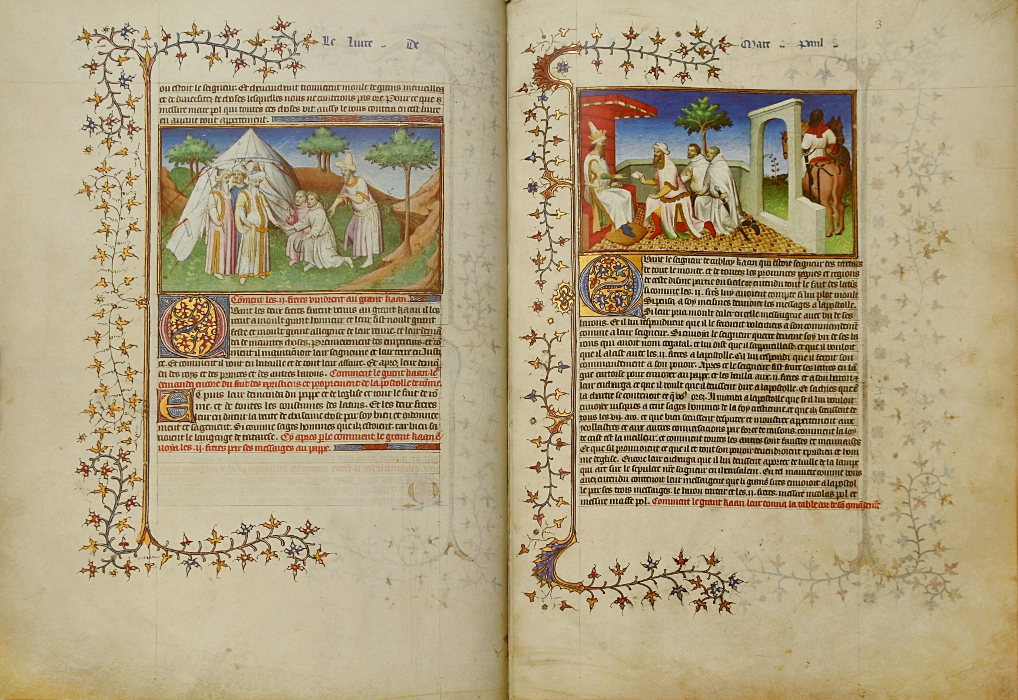
Le Livre des merveilles et autres récits de voyages et de textes sur l’Orient est un manuscrit enluminé réalisé en France vers 1410-1412. Il s'agit d'un recueil de plusieurs textes évoquant l'Orient réunis et peints à l'attention de Jean sans Peur, duc de Bourgogne, contenant le Devisement du monde de Marco Polo ainsi que des textes d'Odoric de Pordenone, Jean de Mandeville, Ricoldo da Monte Croce et d'autres textes traduits par Jean le Long. Le manuscrit contient 265 miniatures réalisées par plusieurs ateliers parisiens. Il est actuellement conservé à la Bibliothèque nationale de France sous la cote Fr.2810.
Le manuscrit, peint vers 1410-1412, est destiné au duc de Bourgogne Jean sans Peur, dont les armes apparaissent à plusieurs reprises (écartelé aux 1 et 4 de France à la bordure componée d’argent et de gueules, aux 2 et 3 bandé d’or et d’azur à la bordure de gueules), ainsi que ses emblèmes (la feuille de houblon, le niveau, le rabot). Son portrait est représenté au folio 226, repeint sur un portrait du pape Clément V. Le manuscrit est donné en janvier 1413 par le duc à son oncle Jean Ier de Berry, comme l'indique l'ex-libris calligraphié en page de garde. L'écu de ce dernier est alors repeint à plusieurs endroits sur celui de son neveu. Le livre est signalé dans deux inventaires du prince en 1413 et 1416. À sa mort, le livre est estimé à 125 livres tournois1.
Le manuscrit est ensuite légué à sa fille Bonne de Berry et à son gendre Bernard VII d'Armagnac. Il reste dans la famille d'Armagnac jusqu'aux années 1470. Il appartient à Jacques d'Armagnac lorsqu'une miniature est ajoutée au folio 42v. et son nom ajouté à l'ex-libris de la page de garde. Arrêté et exécuté en 1477, sa bibliothèque est dispersée et l'emplacement du manuscrit est alors inconnu. Un inventaire de la bibliothèque de Charles d'Angoulême mentionne un Livre des merveilles du monde qui pourrait être celui-ci. Il se retrouve ensuite peut-être dans la bibliothèque privée de son fils, le roi François Ier. Avec le reste de ses livres, il entre dans la seconde moitié du xvie siècle dans la bibliothèque royale et il est mentionné dans l'inventaire de Jean Gosselin.
Ensemble de 15 volumes de format in 4° illustré de 179 planches gravées et numérotées.
Cette série célèbre l’histoire monumentale de la Chine XVIIIe siècle telle qu'en témoignent les missionnaires jésuites, dans tous ses aspects, militaires, agricoles, religieux, géographiques, généalogiques. Ces ouvrage de missionnaires tels que Cibot, Bourgeois, Poirot, Ko et Yang comprend des traductions d'ouvrages de droit chinois classiques, de maximes et de proverbes, ainsi que des essais sur la linguistique chinoise, l'actualité et l'observation scientifique. C’est une encyclopédie sur la Chine à l'usage des Européens.
Points remarquables :
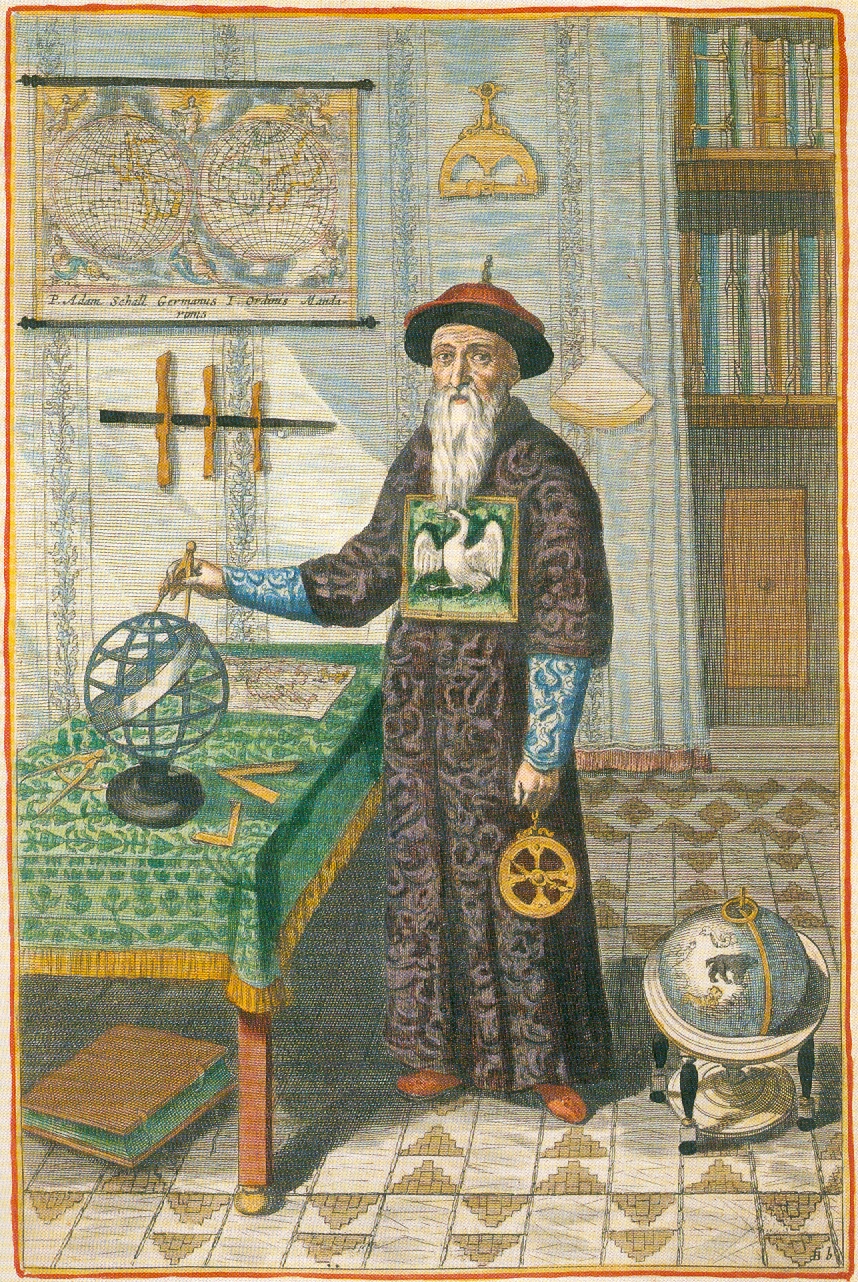
汤若望最重要的贡献之一是参与明末历局的改历、编纂修定“崇祯历书”
"窃维九万里孤踪,结知英主。既荣其生,复哀其死。鱼水相欢,得若将终其身,又预为之计,久远如此。宠施优渥,出于格外,岂人力也哉!"--汤若望墓志铭。
1660年,耶稣会传教士、德国人汤若望在中国大清皇帝顺治赐予他的茔地上建立了一座圣母小教堂。教堂前树立石碑一块,碑上便用满汉两种文字刻着上述碑文。在感激中国君主知遇之恩的同时,不远万里来到这一东方古国、当时已年近古稀、在华渡过了大半生的汤若望,并没有忘记身负的传教使命,以及对天主的景仰。
“古圣贤于遇合之际,率归之天。今予之得遇主上,用西法以定运,进修士以演教。道之将行,日升月恒,殆未可量。又不特一身之感恩称知遇而已,谓非天主上帝默作合于其间,可乎?”
随着1498年葡萄牙航海家达伽马开辟东方新航线,大批欧洲殖民者和商人相继东来。自明朝中叶起,天主教的耶稣会、方济各会和多明我会的传教士也纷纷进入中国内地,其中以耶稣会势力最大,他们逐渐由澳门深入内地,打开传教局面,使天主教在中国立下根基。就连"天主"一词也是16世纪耶稣会传教士进入中国后,借用中国人较容易接受的名称对其所信之上帝赋予的称谓,从此中国便把他们传播的宗教定名为"天主教"。耶稣会士的代表人物当首推意大利人利马窦、瑞士人邓玉函、德国人汤若望以及比利时人南怀仁等,他们甚至跻身朝廷,博得了中国皇帝的青睐。
然而,深受中国儒家思想影响,或者是笃信佛教的中国皇帝,器重这些西方传教士的原因并不在于他们的信仰,而是他们带来的先进科学技术。他们当中有天文学家、数学家、地理学家、画家、医生、音乐家、钟表匠、珐琅专家等。中国社会科学院世界宗教研究所所长卓新平教授说:
“为了在中国站稳脚跟,他们必须具备一些知识,既包括科技也包括人文方面的知识,科技知识在中国尤受欢迎。于是汤若望、纪理安等人的科技知识赢得了中国百姓,特别是学者的佩服,进而是信服,这样在信仰这个方面进行交流就要容易得多了。”
不仅如此,了解中国本土文化、尊重中国人的习俗、掌握中国语言也是耶稣会教士开启中国社会大门的一块敲门砖。曾在德国慕尼黑大学获得哲学博士学位、兼任中国基督教研究中心主任的卓新平教授说:
“当时耶稣会士东来,到了一个陌生的文化、陌生的土地上,他们要想传播他们的信仰,必须先了解这个国度,这个民族的所思所想。在了解过程中,一方面他们是吸收中国的思想文化,另一方面,又把西方的思想文化带入。”
澳门是四百年前耶稣会士进入中国的第一个落脚点。以利玛窦为代表的许多传教士们,一踏上澳门土地,便开始精心研习中国语言文化,甚至以掌握北京官话为目标。这些西方修士入乡随俗,脱下僧袍,换上儒服,住进中式房屋,并潜心研究中国经史和伦理,寻找其中东西方文化的融合点。在同朝野名流交往的过程中,这些上通天文,下知地理,又熟读汉文典籍的西方传教士,自然赢得了中国文人士大夫的好感和信任,从而达到其传播信仰的目的。1605年,名代翰林院学者、主持历局的官员徐光启受洗入教便是一例。
汤若望的贡献
继利玛窦之后,出身于德国科隆贵族世家的汤若望则是又一名活跃于明清之际的著名耶稣会传教士,而比之这位来自意大利的先驱,汤若望的在华经历可谓跌宕起伏,坎坷不平。他不仅是明朝灭亡、清兵入关的见证人,而且以其凛然正气,获得新统治者的应允,得以”留居原寓“,即今宣武门内南堂,继续其历法的修定工作。
汤若望在华四十余年,虽未能达到其传教的目的,但在将西方先进的天文学、光学、火器、矿业等领域的知识介绍到中国这方面,却取得了丰硕成果。而其最重要的贡献之一则是参与明末历局的改历、编纂修定“崇祯历书”。
明朝末年,行用多年的“大统历”误差渐大,钦天监所预报的天象,尤其是日月食屡屡失验。在用中国传统方法与西方方法预报日月食,几经校验比较之后,皇家确定由徐光启主持历局,修改历法。徐光启则聘请了邓玉函、龙华民等传教士参与改历。
1630年,汤若望奉诏从陕西调往北京进历局供职。在中西学者的共同努力下,编译了长达137卷的长篇巨著“崇祯历书”,而其中由汤若望撰写编译的就有包括“交食历指”、“恒星出没表”、“南北高弧表”、“五纬诸表”等共43卷。
除此之外,1626年,汤若望还在中国学者李祖白的协助下撰写了“远镜说”。研究西方传教士对中国科学史所做贡献的专家、北京古观象台副台长李东生女士介绍说:
“汤若望还编纂了‘远镜说’,是根据1616年德国法兰克福出版社出版的赛都利的著作编译而成的。这本书对伽利略望远镜的制作原理、功能、结构、使用方法都做了详尽的说明,通篇条理清楚、浅显易懂,图文并茂。所以专家学者认为,这是中国出版的最早的一部介绍西方光学理论和望远镜技术的启蒙著作。”
为帮助中国开采矿藏,加强国储,汤若望在历局期间,又同中国学者合作翻译了德国矿冶学家阿格里科拉(Georgius Agricola)于1550年撰写的论述16世纪欧洲开采、冶金技术的巨著“矿冶全书”(Dere Metallica Libri XII),中译本定名为“坤舆格致”。此书编成后,汤若望进呈给朝廷,崇祯皇帝御批:“发下‘坤舆格致’全书,着地方官相酌地形,便宜采取”。
不过,因战事已紧,明王朝迅速崩溃,已无暇过问“坤舆格致”的命运,因此该书未被刊行,后来也便在明末清初纷繁的战事中遗失了。而“崇祯历书”却由于汤若望挺身而出,据理力争,不仅躲过了浩劫,后来还得以颁行天下。
迭宕起伏的一生
1644年,清兵入主北京。摄政王多尔衮下达严令:“内城居民,限三日内,尽行迁居外城,以便旗兵居住“。当时住在宣武门天主堂的汤若望冒着违令受惩的危险,上疏朝廷,称:
“曾奉前朝故皇帝令修历法,著有历书多轶,付工镌版,尚未完竣,而版片已堆积累累;并堂中供像礼器、传教所用经典、修历应用书籍并测量天象各种仪器,件数甚伙。若一并迁于外城,不但三日限内不能悉数搬尽,且必难免损坏,修正既非容易,购买又非可随时寄来。”因而恳请“仍居原寓,照旧虔修”。
颇为开明的新统治者第二天便传谕:“恩准西士汤若望等安居天主堂,各旗兵弁等人,毋许阑入滋扰。”
在保护南堂及内存所有历书、仪器和传教所用经典免遭战火洗劫后,汤若望又多次奉召入朝,向新统治者力陈新历之长,并适时进献了新制的舆地屏图和浑天仪、地平晷、望远镜等仪器,而且用西洋新法准确预测了顺治元年(1644年)农历8月初一丙辰日食时,初亏、食甚、复圆的时刻,终于说服当时的摄政王多尔衮,决定从顺治二年开始,将其参与编纂的新历颁行天下。
当时汤若望等传教士得以留住的天主堂便是北京历史最悠久的一座天主教堂,以南堂著称。1605年,利马窦曾于该处建起京城内第一座经堂,但规模很小。后来,在汤若望主持下,于1650年建造了北京城内的第一座大教堂,此处成为汤若望等神父的起居地。
不过,这名曾官至钦天监监正的德国教士工作的地点则是矗立在北京建国门附近的古观象台。古观象台,原名观星台,始建于明正统七年(1442年),是世界上最古老的天文台之一,迄今已有560年的历史了。
它由一座高14米的砖砌观星台和台下紫微殿、漏壶房、晷影堂等建筑组成。在青砖台体上耸立着八件青铜铸就的宏大精美的仪器,是清代制造的天体仪、赤道经纬仪、黄道经纬仪、地平经仪、象限仪、纪限仪、地平经纬仪和玑衡抚辰仪。仪器身上刻有栩栩如生的游龙和精美绝伦的流云,其中部分甚至仍具有实测功能。
明清时代,作为钦天监外署,它是一个重要的天文观测基地。当时中国修定立法、观测天象、编制星表、制造天文仪器等活动都与西方传教士密切相关。汤若望当年工作的厅堂至今仍保存完好。北京古观象台副台长李东生女士介绍说:
“北京古观象台是西方传教士来华最早的落脚点之一,可以说是一个中西方文化交流的窗口。在古观象台工作的传教士有50多人,汤若望是其中最主要的传教士,还担任台长,即钦天监监正。”
1651年,多尔衮死,顺治皇帝爱新觉罗-福临亲政。这名清代开国皇帝虽笃信佛教,但却非常钦佩汤若望的道德与学问,并与之保持着很好的关系,先后24次到访南堂,与汤若望促膝谈心。在华西方传教士长眠的腾公栅栏墓地所在地、今北京西郊行政学院中西文化交流研究中心的研究员林华女士介绍说:
“顺治年幼,对大胡子外国老头非常好奇,多次跑到南堂去看他们是如何生活,工作和吃饭的。汤若望对宫里一些人,包括顺治的母亲,都有一定的影响。根据资料说,汤若望在宫中也发展了一批教徒,但影响不大,因为中国自己就有着各种各样的宗教,佛教、道教等,而满人是信萨满教的。虽然中国人不信西方的宗教,但很尊重这些传教士的学识。顺治还称汤若望为“玛法”,即满语爷爷之意,并赐给他很多特权,比如可以随时进入后宫等。”
这一时期,汤若望在华事业可谓达到了峰巅。岂料顺治皇帝英年早逝,于是年仅8岁的爱新觉罗-玄烨登基,年号康熙。汤若望虽经中国朝代更迭的重大变故,安然无恙,却在清廷内部的权力斗争中成为牺牲品,这便是中国历史上著名的“历案”。林华女士说:
“因为康熙是一个几岁的小娃娃,掌握实权的则是敖拜等反对洋教和西方学说的一些人。因此他们上台以后,汤若望就马上被打入底层,遭到栽赃陷害,并锒铛入狱。他当时已是一位老人,而且很快中风,不会说话。在拷打审问中,都是其助手、比利时的南怀仁替他辩护,但还是被判了死刑。这时候,北京发生大地震,于是皇太后出面为汤若望求情,才得以出狱。但健康已不能挽回,之后不久便去世了。”
康熙亲政后,铲除敖拜等人,为汤若望平反,并派大员在顺治所赐墓地上为汤若望修建坟茔,举行隆重葬礼,还率领百官及亲眷到其墓前祭奠。汤若望墓碑正面是拉丁文和中文碑文,反面是康熙皇帝以汉文和满文为其撰写的祭文。从“鞠躬尽瘁,恤死报勤,国之盛典”等用词足以见中国一代明君对这位来自万里之遥、莱茵河畔的德国传教士高度的评价和认可。
继汤若望之后,来自德国的传教士还有纪理安(Bernard-Kiliam Stumpf)、戴进贤(Ignatius Koegler)等人,他们在钦天监供职,从事天文、历法的观测和推算工作。而死后,同样埋葬在利马窦、汤若望、南怀仁、朗士宁等前辈长眠的腾公栅栏墓地。
如今,传教士们的身躯早已化作一掊黄土,留下的是这座浓荫蔽日、保存了60尊各国教士墓碑的墓园,它已成为中西方科学文化交流的一个历史见证,以及超越时空的推进人类思想文明的象征。(Quelle:德国之声 DW.com)
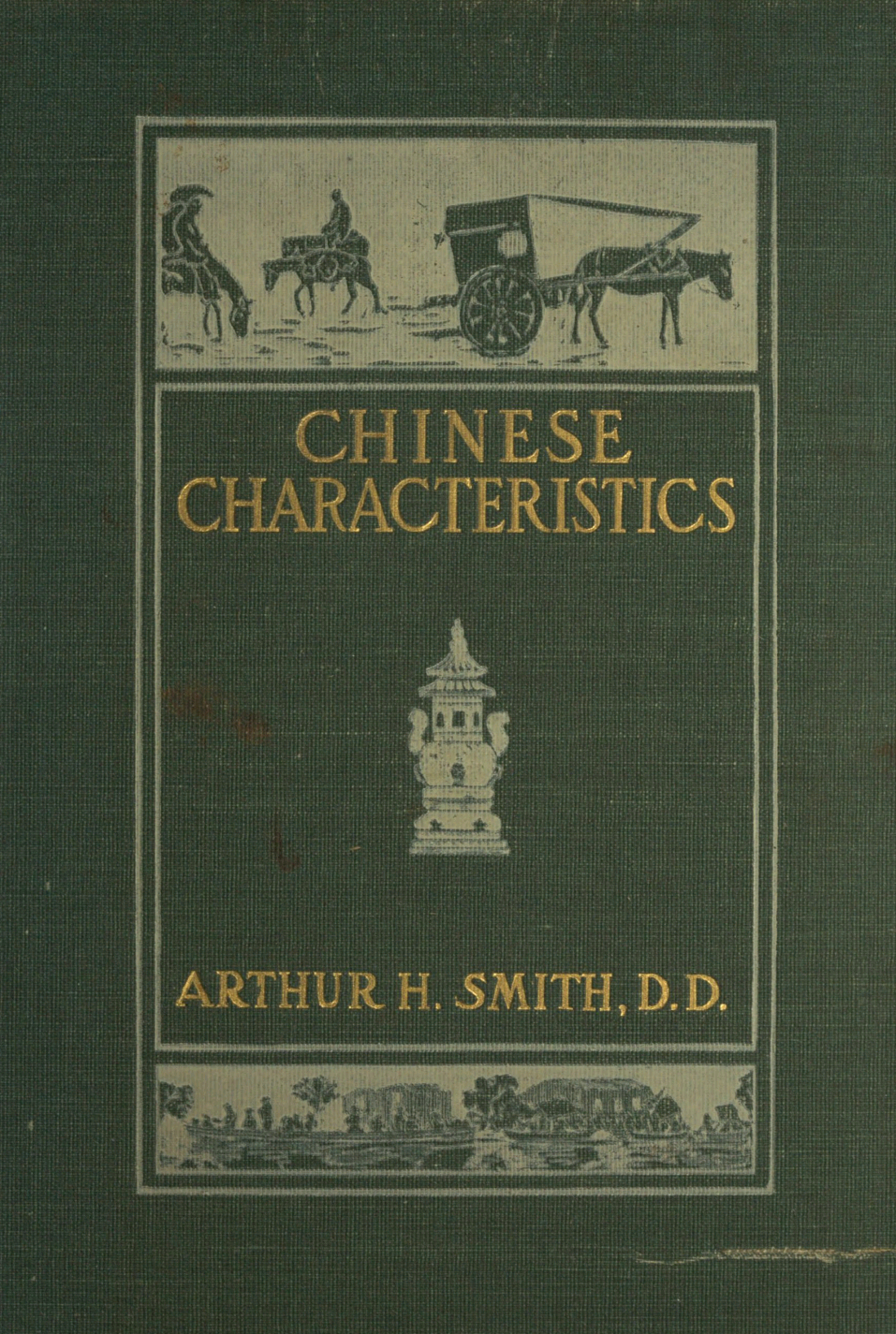
《Chinese characteristics》(中国人的性格)是西方人介绍研究中国民族性格的最有影响的著作。由美国公理会来华传教士明恩溥(Arthur Henderson Smith)撰写。书中描述了100多年前中国人,有高尚的品格、良好的习惯。也有天生的偏狭、固有的缺点。此为1894年刊本。
明恩溥的《中国人的性格》一书的内容1890年曾在上海的英文版报纸《华北每日新闻》发表,轰动一时;1894年在纽约由弗莱明出版公司结集出版。这位博学、不无善意的传教士力图以公允的态度叙述中国。他有在中国生活22年的经验为他的叙述与评价担保,他看到中国人性格的多个侧面及其本相的暖昧性。他为中国人的性格归纳了20多种特征,有褒有贬,并常能在同一,问题上看到正反两方面的意义。《中国人的性格》在近半个世纪的时间里,不仅影响了西方人、日本人的中国观,甚至对中国现代国民性反思思潮,也有很大影响。张梦阳先生对此曾有过专门研究。
史密斯是位诚实、细心的观察家。读者在阅读中不难发现这一点。然而,诚实与信心并不意味着客观与准确。因为文化与时代的偏见与局限,对于任何一个个人都是无法超越的,尤其是一位生活在100年以前的基督教传教士。西方文化固有的优越感,基督教偏见,都不可避免地影响着史密斯在中国的生活经验和他对中国人与中国文化的印象与见解。基督教普世精神、西方中心主义,构成史密斯观察与叙述中国的既定视野。中国人的性格形象映在异域文化背景上,是否会变得模糊甚至扭曲呢?辜鸿铭说”要懂得真正的中国人和中国文明,那个人必须是深沉的、博大的和淳朴的”,”比如那个可敬的阿瑟。史密斯先生,他曾著过一本关于中国人特性的书,但他却不了解真正的中国人,因为作为一个美国人,他不够深沉。。”(《春秋大义》”序言”)
美国传教士眼里的中国人的形象,并不具有权威性。它是一面镜子,有些部分甚至可能成为哈哈镜,然而,问题是,一个美国人不能了解真正的中国人,一个中国人就能了解中国人吗?盲目的自尊与脆弱的自卑,怀念与希望,不断被提醒的挫折感与被误导的自鸣得意,我们能真正地认识我们自己吗?《中国人的性格》已经出版整整l00年了。一本有影响的著作成为一个世纪的话题,谁也绕不开它,即使沉默也是一种反应,辜鸿铭在论著与演说中弘扬”中国人的精神”,史密斯的书是他潜在的对话者,回答、解释或反驳,都离不开这个前提。林语堂的《吾国吾民》,其中颇费苦心的描述与小心翼翼的评价,无不让人感到《中国人的性格》的影响。《中国人的性格》已成为一种照临或逼视中国民族性格话语的目光,所有相关叙述,都无法回避。
我们不能盲信史密斯的观察与叙述都是事实,但也不必怀疑其中有事实有道理。读者们可以根据自己的阅读来判断。了解自己既需要反思也需要外观。异域文化的目光是我们理解自己的镜子。临照这面镜子需要坦诚、勇气与明辨的理性。鲁迅先生一直希望有人翻译这本书,在他逝世前14天发表的《”立此存照”(三)》中,先生还提到:”我至今还在希望有人翻译出斯密斯的《支那人气质》来。看了这些,而自省,分析,明白哪几点说的对,变革,挣扎,自做工夫,却不求别人的原谅和称赞,来证明究竟怎样的是中国人。
明恩溥观察到了中国文化的二十五种特征,他的这本书也包含了这二十五章,每个章的标题都是描述了一个特征,最后两章描述了宗教和社会。
第一章 保全面子
第二章 节俭持家
第三章 勤劳刻苦
第四章 讲究礼貌
第五章 漠视时间
第六章 漠视精确
第七章 易于误解
第八章 拐弯抹角
第九章 顺而不从
第十章 思绪含混
第十一章 不紧不慢
第十二章 轻视外族
第十三章 缺乏公心
第十四章 因循守旧
第十五章 随遇而安
第十六章 顽强生存
第十七章 能忍且韧
第十八章 知足常乐
第十九章 孝悌为先
第二十章 仁爱之心
第二十一章 缺乏同情
第二十二章 社会风波
第二十三章 诛连守法
第二十四章 相互猜疑
第二十五章 缺乏诚信
第二十六章 多元信仰
第二十七章 中国的现实与时务
明恩溥(Arthur Henderson Smith 1845—1932) 又作明恩普,阿瑟·亨德森·史密斯,美国人,基督教公理会来华传教士。1872年来华,最初在天津,1877年到鲁西北赈灾传教,在恩县庞庄建立其第一个教会,先后在此建立起小学、中学和医院,同时兼任上海《字林西报》通讯员。1905年辞去宣教之职。在明恩溥等人推动之下,1908年,美国正式宣布退还“庚子赔款”的半数,计1160余万美元给中国。第一次世界大战爆发后,明恩溥返回美国。
作为一个美国传教士,明恩溥深入天津、山东等地了解中国民众的生存状况,熟悉中国的国情,因而他知道如何以恰当的方式影响中国的未来。1906年,当他向美国总统西奥多·罗斯福建议,将清王朝支付给美国的“庚子赔款”用来在中国兴学、资助中国学生到美国留学时,他大概已经意识到了实施这一计划所能具备的历史意义。清华留美预备学校(后改名为清华大学)的成立,为中国留学生赴美打开了大门,一批又一批年轻学子从封闭的国度走向世界,他们中间涌现出众多优秀人才,归国后成为不同领域的精英。
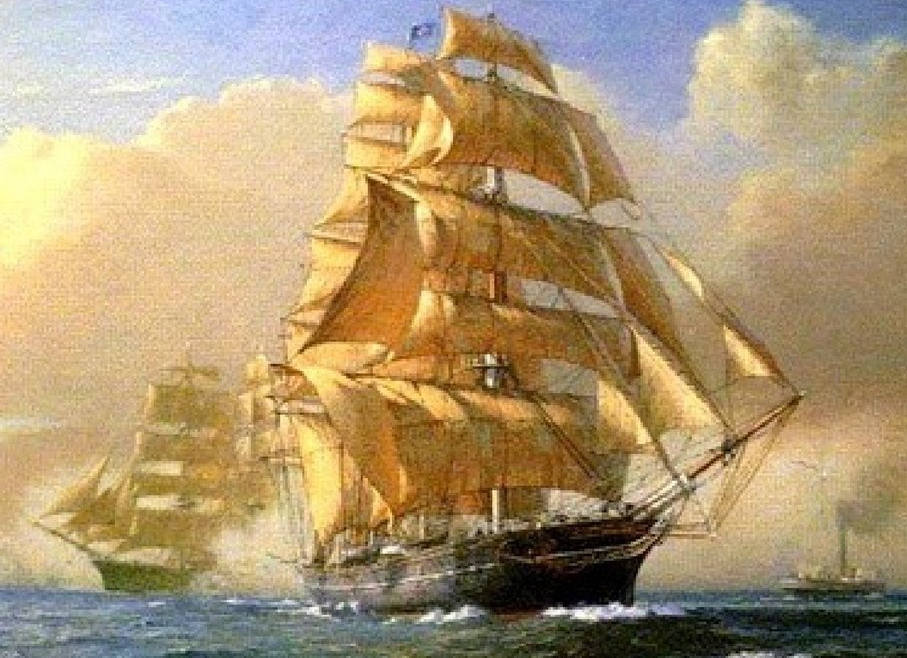
Amphitrite, femme de Poséidon dans la mythologie grecque, est également le nom du premier vaisseau français à accoster sur les côtes chinoises. Après les Portugais, les Hollandais et les Anglais, la France entreprend, grâce à ce navire, le commerce direct avec La Chine. Au tournant du XVIIIe siècle, le vaisseau réalise ainsi deux expéditions.
Genèse du premier voyage de l’Amphitrite
L’histoire de ce vaisseau débute bien avant son départ pour Canton le 6 mars 1698 car le projet de cette expédition naît à Pékin et non en France. Lors de l’ambassade française au Siam en 1685, le vaisseau l’Oiseau embarque à son bord six jésuites qui doivent rallier la capitale impériale. Parmi eux figurent le père Joachim Bouvet (1656-1730) et le père Jean de Fontaney (1643-1710) . Après quelques années, l’empereur chinois Kangxi (1654-1722), avide de savoirs occidentaux, mandate le père Joachim Bouvet afin de ramener en Chine de nouveaux missionnaires français. Désigné « envoyé spécial de l’Empereur », le père Joachim Bouvet rentre en France en mars 1697.
Histoire de l’armement
En avril 1687, le père est reçu par Louis XIV qui n’est pas très enthousiaste dans un premier temps par ce voyage mais il se laisse convaincre car l’expédition représenterait une aide conséquente à la conversion de l’empire chinois. Néanmoins, le père jésuite ne parvient pas à obtenir le titre de vaisseau du roi. Après avoir contacté la Compagnie des Indes françaises qui se montre réticente à cette entreprise qu’elle juge audacieuse et risquée, le père Bouvet se tourne vers Jourdan de Groussey, responsable des ventes de la manufacture des glaces. Via le comte de Pontchartrin, le vaisseau l’Amphitrite de 500 tonneaux est acheté puis rapidement chargé de quantité de glaces, de marqueterie française, de portraits de la cour, de pendules, de montres et de liqueurs. Le récit de voyage de Froger, matelot sur le vaisseau, est très instructif sur la cargaison et sur leur finalité. Il fournit également de nombreux détails sur la route empruntée et la direction des vents. Celui du peintre italien Gio Ghirardini est plus pittoresque que le récit de Froger de la Rigaudière car il relate son expérience personnelle. En raison du manque de sources manuscrites sur le premier envoi, lacune qui est remarquée par Paul Pelliot, les récits de voyage constituent les premiers documents mobilisables pour connaître les détails de l’expédition.
De son départ de la Rochelle le 6 mars 1698 jusqu’à Canton le 2 novembre 1698, le voyage se déroule sans embûche même si l’équipage manque le détroit de la Sonde. Une fois arrivé à Canton, le statut du navire pose problème. Si Louis XIV n’a pas autorisé le titre de vaisseau du roi à l’Amphitrite, afin de ne pas froisser les Portugais, le père Joachim Bouvet affirme pourtant bien le contraire au capitaine de La Roque. Néanmoins, l’ambivalence de statut du navire, vaisseau marchand ou vaisseau de tribut, entraîne nombre de complications au sujet de la cargaison et des taxes à acquitter. Le vaisseau est finalement exempté de toutes les taxes marchandes et les biens destinés à la cour sont bien acheminés jusqu’à Pékin. Déchargement puis chargement ont entraîné de nombreux retard et l’Amphitrite ne repart de Canton que quatorze mois plus tard, le 26 janvier 1700.
Retour et second voyage
Le retour du vaisseau à Lorient le 3 août 1700 et la vente des produits chinois à Nantes est à la hauteur des ambitions placées dans l’expédition. La soie est autorisée à être écoulée en France tandis que les porcelaines des 181 caisses de la cargaison de retour se vendent très bien et font sensation en France. A partir de ce premier voyage, l’Amphitrite est armé une deuxième fois le 7 mars 1701 pour la même destination. Si le premier voyage ne fut qu’une tentative en vue d’établir des connaissances plus précises sur les biens commercialisables en Chine, les informations rapportées ont été très instructives pour le second envoi et rendent les deux expéditions indissociables l’une de l’autre. Elles ont également de grandes similitudes telles que l’établissement du commerce français dans cette région, la mise en place de deux ambassades officieuses, et le rôle des jésuites comme intermédiaires culturels. Sur ce point, le père Jean de Fontaney est au second voyage de l’Amphitrite ce que le père Bouvet fut pour le premier. Il rentre en France au terme du premier voyage du vaisseau et contribue à la mise en place de la seconde expédition. Savary des Bruslons, dans Le Dictionnaire universel du commerce, détaille par ailleurs la cargaison aller pour ce deuxième voyage. Cependant, le second voyage connaît de plus grandes difficultés (exemption refusée, démâtage, perte de l’ancre et de nombreux morts). Il laisse plus de 100 000 livres de pertes et représente ainsi une grande déception sur le plan commercial.
Considéré par Paul Pelliot comme le point de départ des relations franco-chinoises, l’Amphitrite ouvre la voie a plusieurs dizaines de vaisseaux français tout le long du XVIIIe siècle.
Légende de l'image : Le voyage en Chine : esquisse de décor de l'acte III : le bateau à vapeur " la pintade". P. Chaperon
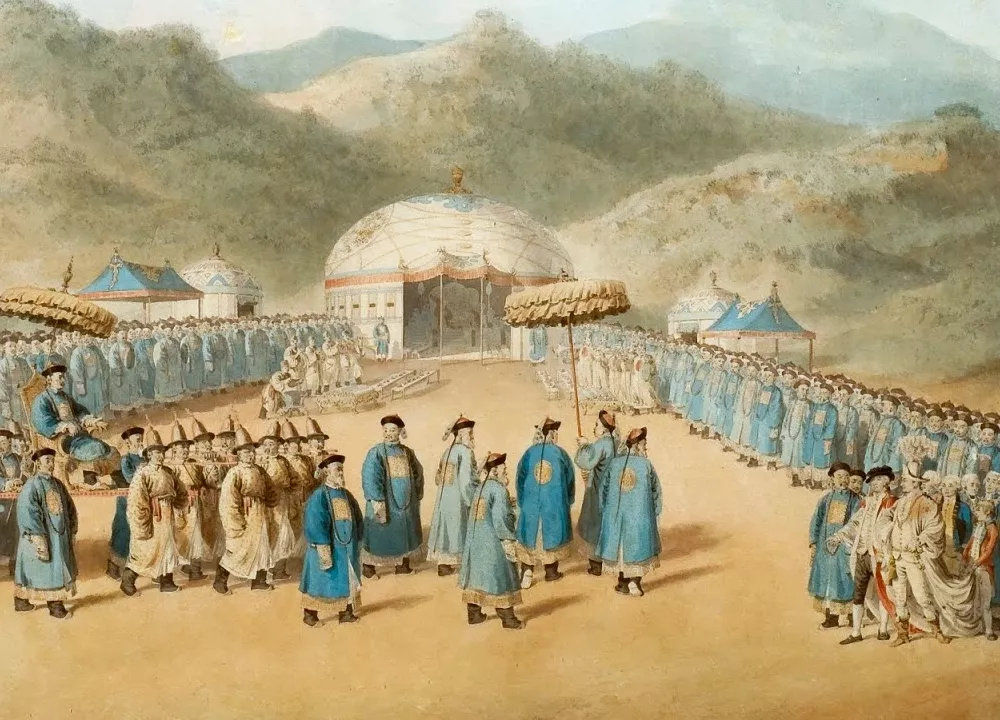
Here the artist William Alexander represents the moment when Lord Macartney, a British diplomat, was received by the Qing Emperor Ch’ien-Lung on the occasion of the first embassy to China. Within the grounds of the imperial palace at Jehol (Chengde), a lavish tent was erected to host the audience on 14 September 1793. Despite the level of detail in this sketch, Alexander, official draughtsman to the Embassy, was not actually present to witness the event. His reconstruction is based on verbal accounts and sketches produced by core members of the delegation. Those twelve members are depicted at right, each man numbered to correspond to a labelled key at top right. Sir George Staunton, the Secretary to the Embassy and East India Company official, stands behind Macartney, wearing the silk robes and velvet hat which mark him as Doctor of Laws from Oxford University. Other members of the retinue include Lieutenant Henry Parish, whose sketches of the Embassy provided the absent Alexander with important source material.
Surrounded by courtiers, Ch’ien-Lung is depicted seated at his throne with Macartney before him. The Ambassador, on the orders of his British advisors, decided to forgo performing the customary ritual of the kowtow before the Emperor. This required an individual to kneel with both knees on the ground and prostrate themselves low enough so that their forehead touched the ground. The kowtow was considered demeaning by the British, and thus Macartney chose to genuflect as he would to his own sovereign George III. The Ambassador was repeatedly urged to perform the traditional Chinese kowtow, but as diplomat he felt it important to present George and Ch’ien-Lung as equals. This was not received positively by the Chinese who viewed their Emperor as the Son of Heaven with no human equal. According to their view the objects presented by the British in the ceremonial exchange of gifts were perceived as ‘tribute’ items, and Macartney as conveyor of tribute rather than legate of King George.
As well as presenting gifts to the Emperor, Macartney gave a letter to Ch’ien-Lung written by George III. The letter requested that Chinese officials controlling the port of Canton, hub of Anglo-Chinese trade and headquarters of the East India Company, reconsider the legislations they applied to foreign merchants. These rules were seen as dogmatic and limiting to British trading interests. George also asked for permission to establish an ambassador in Canton, who would oversee the expansion of British markets. In the event, these requests were declined by the Emperor, who saw no reason to oblige the demands of an ultimately rival Empire. He stated in an edict that China was entirely self-sufficient, and that everything he and his subjects needed could be manufactured domestically. There was no reason to allow an infiltration of British goods. There was no precedent for loosening Cantonese legislations and it was in China’s interest to preserve their dominion over the strategic port.
(Quelle:https://www.bl.uk/collection-items/the-emperor-of-china-receiving-the-macartney-embassy)

一个人喝葡萄酒,往往始于法国,却止于意大利。对于这句话,很多对意大利葡萄酒缺乏了解的爱好者或消费者表示不理解。
大多数的时候,对事物的误解和偏见,往往是因为对这件事物缺乏了解。而意大利葡萄酒虽然很强大,却因为体系复杂,又得不到教育和利益系统的支持,成为了中国葡萄酒市场中不被大多数爱好者和消费者了解的神一般的存在。
这话有两层含义,第一层是大家最开始喝的都是法国酒,意大利一般都是后来才接触;第二层是葡萄酒喝的多了,时间久了,对葡萄酒的了解越来越多,如果接触到意大利酒,很可能成为意大利葡萄酒的忠实爱好者。
由于做意大利葡萄酒媒体的缘故,在我的身边,有越来越多意大利葡萄酒的忠实粉丝,只有见到这些人,深入的了解他们,你才能理解这句话语的意思。
我所见到的意大利葡萄酒爱好者,他们是有共性的,热爱生活,爱学习,有热情,逻辑思考能力强。他们的葡萄酒知识和经验普遍都比较深厚,对全球主要的葡萄酒产区和知名酒庄,都有比较充分的了解。
因为他们对葡萄酒的了解大多是从法国开始的,新世界的酒也喝了很多,所以他们能够客观的认识全球葡萄酒体系,对意大利葡萄酒的优势和特点,有着清晰的认识。
前些天曾有朋友在酒窝微信群里组织法国酒与意大利葡萄酒的辩论,结果居然找不到法国酒的辩方代表,最后变成了意大利葡萄酒爱好者的分享课。当然,组织者还在进行后续的组织和招募,期望能够促成一场精彩的法国酒与意大利酒之间的辩论赛。
我很期望这场辩论赛能够组织起来,如果专业的法国酒爱好者和意大利酒爱好者能有一场精彩的辩论,对于所有的葡萄酒爱好者和消费者而言,都是一件很有意思的事情,也能有效的传播和普及相关的葡萄酒知识。
然而从当下的情况来看,组织这场辩论赛最大的问题是,你很容易就能找到很多位非常熟悉和了解法国的意大利葡萄酒忠实爱好者,但是却很难找到了解意大利的法国葡萄酒的忠实爱好者,这就出现了辩论赛选手知识不对等的问题。
意大利酒爱好者的辩方代表会有一种无奈,我完全了解你,你却对我知之甚少,咱俩怎么辩~~??这就像一场战争,一方对另一方的情报了如指掌,没有情报的一方是不可能赢得这场战争的。
有没有特别深入了解意大利,又不喜欢意大利而专爱法国酒的专业人士呢?目前还没有人站出来要参与辩论,如果有,这场精彩的辩论赛很快就可以组织起来了。
在法国酒和意大利酒之间,其实本不必去制造这种冲突,在多姿多彩的葡萄酒世界里,每个国家、产区和葡萄品种,都有其独特的个性和魅力存在着。只要是好喝的葡萄酒,来自哪里并不重要,旧世界和新世界,都有着各自的精彩。
因为只有了解更多,才能更客观的看待问题。我尽可能从客观的角度,来分析一下开始那句话的两层意思。
为什么大家最开始喝的都是法国酒,后来才是意大利?
我给大家解释意大利葡萄酒的时候,通常会给大家一个我自己创造的概念。我通常会说:“在我的葡萄酒世界里,我把葡萄酒生产国分为:意大利,和其他国家。” 为什么这么分?因为除了意大利之外,全球主要的葡萄酒生产国,其实都是主要使用法国葡萄酿造葡萄酒,所以这些在全球普及的法国葡萄(赤霞珠、品丽珠、美乐、黑皮诺、长相思、霞多丽、雷司令等),通常被意大利人称为国际品种。虽然葡萄酒是伴随着罗马皇帝的征服在欧洲开枝散叶的,但是法国在近现代葡萄酒产业的发展中,的确是居功至伟。
所以在大多数时候,酒商和消费者其实只要了解不到10个葡萄品种,就可以很容易的深入到除了意大利之外的主要产酒国(法国、智利、澳大利亚、美国、南非、西班牙,乃至中国)。但是如果你要了解意大利,你会发现你所熟悉的10种葡萄,虽然在意大利也有种植,但是更精彩的是,这里还有400多种你完全不了解的意大利本土品种。
不要说酒商,就是很多专业人士,因为在学习和工作中接触的,主要是以法国葡萄和普通酿造工艺为核心的知识体系,毕竟全球除了意大利之外,主要的葡萄酒生产国都是遵循法国葡萄酒的酿酒哲学和逻辑在发展的。即使掌握了非常丰富的法国葡萄酒知识,获得了非常专业葡萄酒教育(比如WSET三级以上)认证的专业人士,却往往对意大利葡萄酒知之甚少。
所以我认为,意大利葡萄酒具有最大的多样性和复杂度,却没有能在中国普及的知识教育来支持,这可能是意大利葡萄酒进入市场较晚的主要原因。
当然,法国葡萄酒企业进入中国比较早,这中间有法国人的商业头脑因素,毕竟很多法国名庄的老板,大多是法国知名大集团和大富豪,他们对中国葡萄酒市场的启蒙和教育,做出了很多贡献。
有意思的是,从品牌传播的角度而言,法国葡萄酒得以在中国建立较高的知名度,更要感谢的是张裕、长城在多年以前不遗余力的,数以亿计人民币投入的广告和宣传,主题是描述山东和河北产区与波尔多同纬度,所以也能生产高品质的葡萄酒,在中国人心目中将波尔多塑造成葡萄酒的唯一圣殿,虽然事实并非如此。
起到助推作用的,当然还有二三十年前,香港电影中黑社会老大、赌神,或者富豪对拉菲葡萄酒的推崇。要知道,那个人民群众文化生活比较贫瘠的时代,很多香港电影的观看率,都是10亿以上的。如此看来,任何事情的成功,都不是偶然,但是影响成功的因素,往往和这件事物有着微妙的联系。
如今意大利葡萄酒在中国的市场份额只有5.5%,排在法国、澳大利亚、智利、西班牙之后。所以我经常会遇到这样的问题,意大利酒是不是不行呀?
真正的事实是,意大利目前是全球最大的葡萄酒生产国,在美国、德国、英国这样的成熟市场,意大利葡萄酒的市场份额都是第一。
中国是全球第二大葡萄酒市场,却是意大利排名第13的出口目的国,中国市场意大利葡萄酒的进口额,不到意大利葡萄酒出口总额的1/50。所以这真的不是意大利葡萄酒行不行的问题,而是中国市场为什么和成熟市场不同的问题!
没有哪个国家有中国这么大的VCE葡萄酒进口量,每年的进口瓶数数以亿计。法国一些灌瓶厂把来自全欧洲的散装原酒,用工业化的方法加工成Made in France的欧洲餐酒,倾销的到中国。奇怪的是,我只见到法国南部的酒农很愤怒,但是却很少见到中国酒商因此感到惭愧和气愤,甚至质疑这种产品的品质都成了一件很容易得罪人,甚至被攻击的事情。
更可悲的是,由于需求太大,来自法国的VCE居然出现了供不应求的趋势,价格开始上涨,于是来自其他国家的类似产品也开始涌现。
二十年来,大家都觉得葡萄酒市场的春天要来,但是一直没来。你们觉得原因是什么?VCE们真的是可以让消费者有好的体验?感受到愉悦?产生消费粘性和重复购买吗?那些酒商自己都不敢经常喝的酒,消费者能侥幸多活几年都是奇迹,真的会喝出忠诚度,能培育出一个健康的葡萄酒市场来吗?
其实这真的不能只怪法国酒,也不能怪法国人。说到这里,我要说的是,法国有很多品质优良的葡萄酒,智利、澳大利亚、美国、南非,还有中国,都有很多质量很好,价格合理的葡萄酒。我们中国消费者,真的应该多享受那些物美价优的葡萄酒。
言归正传。
为什么葡萄酒喝的多了,时间久了,对葡萄酒的了解越来越多,如果接触到意大利酒,很可能成为意大利葡萄酒的忠实爱好者?
对于大多数葡萄酒爱好者而言,葡萄酒的丰富、多变和不可掌控,是吸引很多人去不断探索的主要原因。熟悉了法国葡萄酒,喝了名庄,喝遍了新世界,意大利将是一座不可绕过的山脉。
对于大多数葡萄酒爱好者而言,意大利葡萄酒是未知、神秘和不容易亲近的。了解意大利,要放空自己,用更开放的心态去尝试和了解。这个开始的过程,最好有一位了解意大利葡萄酒的朋友做引导,不然很多人可能是因为不了解和误会,错过那扇刚刚打开的意大利葡萄酒之门。
我经常对刚刚开始接触意大利葡萄酒的朋友说,了解意大利,不能按照理解法国酒的方式,因为意大利的葡萄种植和酿酒的哲学与逻辑,与以法国为代表的葡萄酒世界不同。
法国有代表性的三个产区,波尔多、香槟和勃艮第。尊重风土,但是采取了非常多的人工干预,不仅仅在葡萄种植的环境,尤其是酿造中,小橡木桶的使用、瓶中二次发酵中酵母的使用,都是通过人工去弥补葡萄风土的不足,或是赋予本不属于葡萄的一些更完美的元素。
我发自内心的注重法国对于葡萄酒产业发展的巨大贡献,也非常享受那些近乎完美的法国精品酒的品质,这种哲学和技术也因此在全球被广泛的使用,带给全球消费者美好的体验。
那意大利和法国的不同是什么呢?
是意大利葡萄酒的多样性,最少的人工干预以实现对风土的保护和尊重,以及追求个性和创新精神。
我经常用这样的一个比喻,来对比法国为代表的葡萄酒和意大利葡萄酒。
我说,法国葡萄酒所代表的风格,就像你去参加一个隆重的晚宴,你走进房间,所有的男士都是身着燕尾服的绅士和贵族,所有的女士都是盛装晚礼服的淑女和贵妇,彬彬有礼,温文尔雅。
然而意大利,却是同样的一个晚宴,你走进去,发现里面容纳了各种个样的人,有政要、有商人,有艺术家、也有科学家,有明星、也有贵族,有赛车手、也有足球运动员,有工程师、也有it男,有玩美术的、也有玩音乐的。
即使是玩音乐的,有搞交响乐的、有唱歌剧的,有搞古典的,也有玩现代的。即使是摇滚乐,也有乡村、布鲁斯、迷幻和重金属。这就是意大利,风格各异,多姿多彩,即传承经典,也乐于创新;即尊重市场,也坚持个性。
说到这里,你能理解为什么那么多人深爱意大利吗?
或许是因为尊重,或许是因为你可以有更多的选择,或许是因为没有人要求你必须记住这个酒是否是名庄,是不是很贵。在意大利只要你愿意探索,总有一种或几种价格不贵的意大利酒,能让你刻骨铭心,痴心不改。
我有一个发现,很多人问我,意大利为什么没有排名,没有列级庄?
我说,意大利从政府到产区,没有人愿意去排名,或许是他们期望更多的公平,或许是不去制造利益集团。
在法国波尔多,为什么很少有酒庄能超越1855列级庄?
评级,是奖励优秀者。但是评级也是一把双刃剑,因为列级庄可能会变成利益集团,变成产区的天花板。智利十八罗汉,谁想称为第十九罗汉?那要先经过18位利益获得者的同意,这就是江湖,放之四海皆准…
我采访过很多意大利葡萄酒产区,大多数人都认为排名只能代表过去,不能激励一家酒庄把酒酿的更好。他们认为,每个酒庄主和酿酒师都有权利去追求自己认为好的风格和个性,一个值得大家学习的榜样,不应该是怎么把葡萄酒做成一个样子,而是制造出更多不同的美好!
这就是我眼中的意大利葡萄酒,或许是因为喜爱,有些许的不够客观。但是,如果这篇文章能唤起你尝试和了解意大利葡萄酒的兴趣,我想,我们的葡萄酒世界将会更加丰富多彩,我们也将得到更多不同体验带来的快乐。(Quelle:https://m.winesinfo.com/ 略有删节)
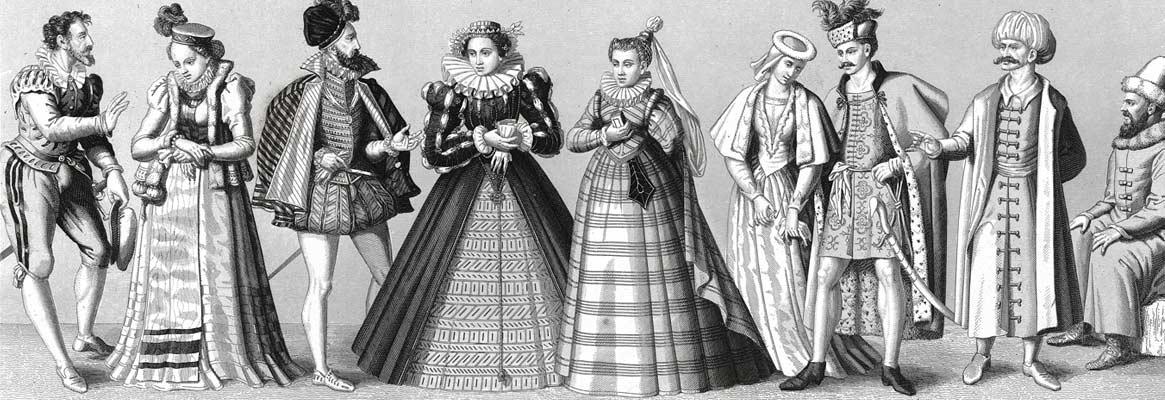
France was one of the most energetic and creative nations in Western history. The ever-evolving French clothing tradition has remained an inspiration for fashionistas, says Abarrna Devi R.
Fashion is an integral part of the society and culture in France and acts as one of the core brand images for the country. Haute couture and pret-a-porter have French origins. France has produced many renowned designers and French designs have been dominating the fashion world since the 15th century. The French fashion industry has cultivated its reputation in style and innovation and remained an important cultural export for over four centuries. Designers like Gabrielle Bonheur 'Coco' Chanel, Christian Dior, Yves Saint Laurent, Thierry Herms and Louis Vuitton have founded some of the most famous and popular fashion brands.
In the 16th century, fashion clothing in France dealt with contrast fabrics, clashes, trims and other accessories. Silhouette, which refers to the line of a dress or the garment's overall shape, was wide and conical for women and square for men in the 1530s. Around the middle of that decade, a tall and narrow line with a V-shaped waist appeared. Focusing on the shoulder point, sleeves and skirts for women were widened. Ruffles got associated with neckband of a shirt and was shaped with clear folds. A ruffle, frill, or furbelow is a strip of fabric, lace or ribbon tightly gathered or pleated on one edge and applied to a garment, bedding, or other textile as a form of trimming.
Outer clothing for women was characterised by a loose or fitted gown over a petticoat. In the 1560s, trumpet sleeves were rejected and the silhouette became narrow and widened with concentration in shoulder and hip.
Between 1660 and 1700, the older silhouette was replaced by a long, lean line with a low waist for both men and women. A low-body, tightly-laced dress was plaited behind, with the petticoat looped upon a pannier (part of a skirt looped up round the hips) covered with a shirt. The dress was accompanied by black leather shoes. Winter dress for women was trimmed with fur. Overskirt was drawn back in later half of the decades, and pinned up with the heavily-decorated petticoat. But around 1650, full, loose sleeves became longer and tighter. The dress tightly hugged the body with a low and broad neckline and adjusted shoulder.
Men's clothing did not change much in the first half of the 17th century. In 1725, the skirts of the coat acted as a pannier. This was brought about by making five or six folds distended by paper or horsehair and by the black ribbon worn around the neck to give the effect of the frill. A hat carried under the arm and a wig added to the charm. At court ceremonies, women wore a large coat embroidered with gold that was open in the front and buttoned up with a belt or a waist band. The light coat was figure-hugging with tighter sleeves. It was projected in the back with a double row of silk or metal buttons in various shapes and sizes.
French fashion varied between 1750 and 1775. Elaborate court dresses with enchanting colours and decoration defined style. In the 1750s, the size of hoop skirts got smaller and was worn with formal dresses with side-hoops. Use of waistcoats and breeches continued. A low-neck gown was worn over a petticoat during this period. Sleeves were cut with frills or ruffles with fine linen attached to the smock sleeves. The neckline was fitted with trimmed fabric or lace ruffle and a neckerchief (scarf).
Fashion between 1795 and 1820 in European countries transformed into informal styles involving brocades and lace. It was distinctly different from earlier styles as well as from the ones seen in the latter half of the 19th century. Women's clothes were tight against the torso from the waist upwards and heavily full-skirted. The short-waist dresses adorned with soft, loose skirts were fabricated with white, transparent muslin. Evening gowns were trimmed and decorated with lace, ribbons and netting. Those were cut low with short sleeves.
In the 1800s, women's dressing was characterised by short hair with white hats, trim, feathers, lace, shawls and hooded-overcoats while men preferred linen shirts with high collars, tall hats and short and wigless hair.
In the 1810s, dress for women was designed with soft, subtle, sheer classical drapes with raised back waist and short-fitted single-breasted jackets. Their hair was parted in the centre and they wore tight ringlets in the ears. Men's dress was fabricated with single-breasted tailcoats, cravats (the forerunner of the necktie and bow tie) wrapped up to the chin with natural hair, tight breeches and silk stockings. Accessories included gold watches, canes and hats.
In the 1820s, women's dress came with waist lines that almost dropped with elaborate hem and neckline decoration, cone-shaped skirts and sleeves. Men's overcoats were designed with fur of velvet collars.
Fashion designers still get inspired by 18th century creations. The impact of the 'clothing revolution' changed the dynamics of history of clothing. Paris is a global fashion hub and despite competition from Italy, the United Kingdom, Spain and Germany, French citizens continue to maintain their indisputable image of modish, fashion-loving people.
About the author
Abarrna Devi R is a final year B. Tech student in the department of fashion technology in Bannari Amman Institute of Technology, Sathyamangalam, Coimbatore, and Tamil Nadu.
References
1. Dauncey, Hugh, ed., French Popular Culture: An Introduction, New York: Oxford University Press (Arnold Publishers), 2003.
2. DeJean, Joan, the Essence of Style: How the French Invented High Fashion, Fine Food, Chic Cafes, Style, Sophistication, and Glamour, New York: Free Press, 2005, ISBN978-0-7432-6413-6
3. Kelly, Michael, French Culture and Society: The Essentials, New York: Oxford University Press (Arnold Publishers), 2001, (a reference guide)
4. Nadeau, Jean-Benot and Julie Barlow, Sixty Million Frenchmen Can't Be Wrong: Why We Love France but Not the French, Sourcebooks Trade, 2003, ISBN1-4022-0045-5
5. Bourhis, Katell le: The Age of Napoleon: Costume from Revolution to Empire, 1789-1815, Metropolitan Museum of Art, 1989. ISBN0870995707
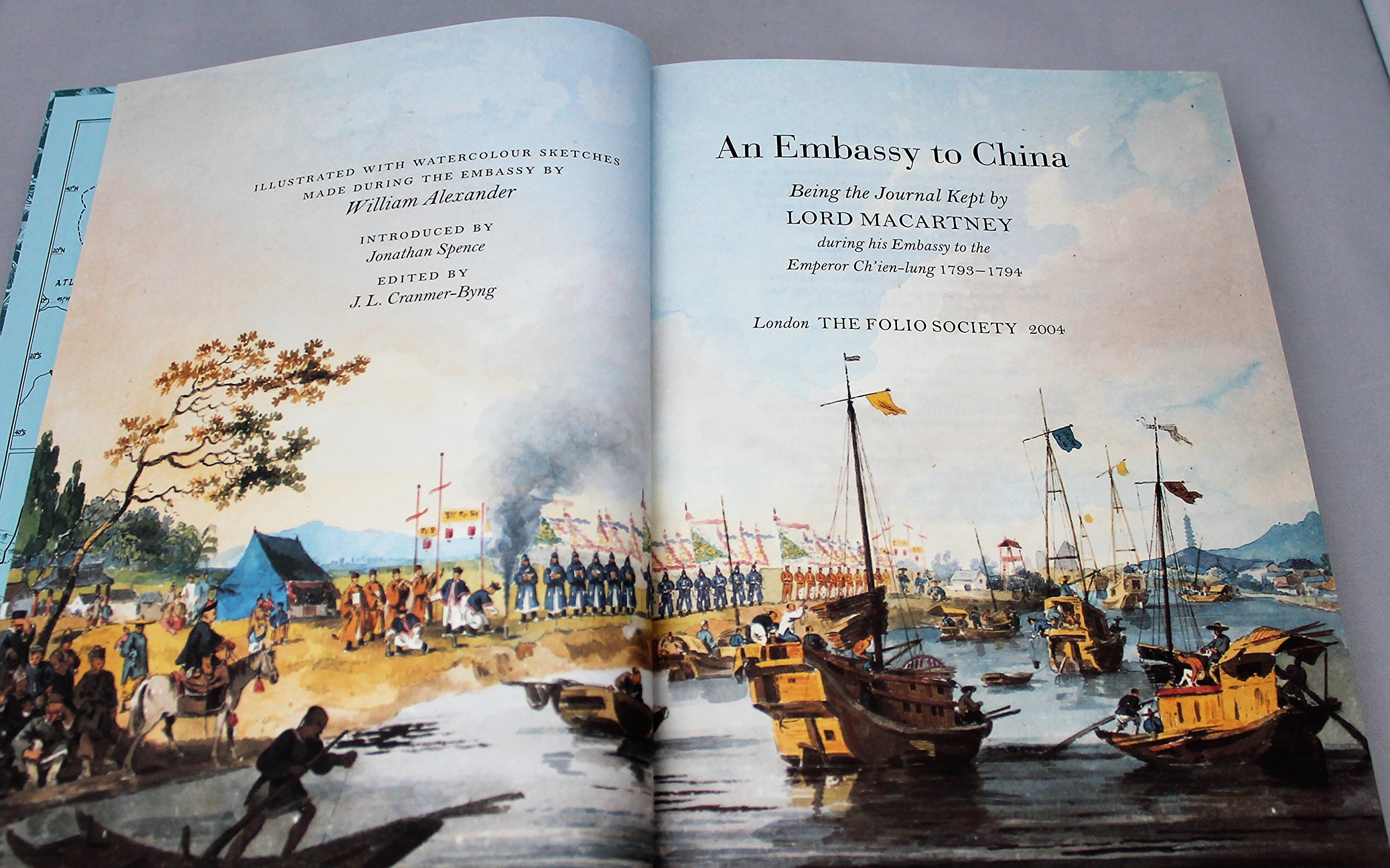
The Macartney Embassy (Chinese: 馬加爾尼使團), also called the Macartney Mission, was the first British diplomatic mission to China, which took place in 1793. It is named for its leader, George Macartney, Great Britain's first envoy to China. The goals of the mission included the opening of new ports for British trade in China, the establishment of a permanent embassy in Beijing, the cession of a small island for British use along China's coast, and the relaxation of trade restrictions on British merchants in Guangzhou (Canton). Macartney's delegation met with the Qianlong Emperor, who rejected all of the British requests. Although the mission failed to achieve its official objectives, it was later noted for the extensive cultural, political, and geographical observations its participants recorded in China and brought back to Europe.
Foreign maritime trade in China was regulated through the Canton System, which emerged gradually through a series of imperial edicts in the 17th and 18th centuries. This system channeled formal trade through the Cohong, a guild of thirteen trading companies (known in Cantonese as "hong") selected by the imperial government. In 1725, the Yongzheng Emperor gave the Cohong legal responsibility over commerce in Guangzhou. By the 18th century, Guangzhou, known as Canton to British merchants at the time, had become the most active port in the China trade, thanks partly to its convenient access to the Pearl River Delta. In 1757, the Qianlong Emperor confined all foreign maritime trade to Guangzhou. Qianlong, who ruled the Qing dynasty at its zenith, was wary of the transformations of Chinese society that might result from unrestricted foreign access.[1] Chinese subjects were not permitted to teach the Chinese language to foreigners, and European traders were forbidden to bring women into China.[2]: 50–53
By the late 18th century, British traders felt confined by the Canton System and, in an attempt to gain greater trade rights, they lobbied for an embassy to go before the emperor and request changes to the current arrangements. The need for an embassy was partly due to the growing trade imbalance between China and Great Britain, driven largely by the British demand for tea, as well as other Chinese products like porcelain and silk. The East India Company, whose trade monopoly in the East encompassed the tea trade, was obliged by the Qing government to pay for Chinese tea with silver. To address the trade deficit, efforts were made to find British products that could be sold to the Chinese.
At the time of Macartney's mission to China, the East India Company was beginning to grow opium in India to sell in China. The company made a concerted effort starting in the 1780s to finance the tea trade with opium.[3] Macartney, who had served in India as Governor of Madras (present-day Chennai), was ambivalent about selling the drug to the Chinese, preferring to substitute "rice or any better production in its place".[2]: 8–9 An official embassy would provide an opportunity to introduce new British products to the Chinese market, which the East India Company had been criticised for failing to do.[4]
In 1787, Prime Minister William Pitt the Younger and East India Company official Henry Dundas dispatched Colonel Charles Cathcart to serve as Britain's first ambassador to China. Cathcart became ill during the voyage, however, and died just before his ship, HMS Vestal, reached China. After the failure of the Cathcart Embassy, Macartney proposed that another attempt be made under his friend Sir George Staunton. Dundas, who had become Home Secretary, suggested in 1791 that Macartney himself take up the mission instead. Macartney accepted on the condition that he would be made an earl, and given the authority to choose his companions.
Macartney chose George Staunton as his right-hand man, whom he entrusted to continue the mission should Macartney himself prove unable to do so. Staunton brought along his son, Thomas, who served the mission as a page. John Barrow (later Sir John Barrow, 1st Baronet) served as the embassy's comptroller. Joining the mission were two doctors (Hugh Gillan[5][6] and William Scott), two secretaries, three attachés, and a military escort. Artists William Alexander and Thomas Hickey would produce drawings and paintings of the mission's events. A group of scientists also accompanied the embassy, led by James Dinwiddie.[2]: 6–8
It was difficult for Macartney to find anyone in Britain who could speak Chinese because it was illegal for Chinese people to teach foreigners. Chinese who taught foreigners their language risked death, as was the case with the teacher of James Flint, a merchant who broke protocol by complaining directly to Qianlong about corrupt officials in Canton.[7] Macartney did not want to rely on native interpreters, as was the custom in Canton.[8] The mission brought along four Chinese Catholic priests as interpreters. Two were from the Collegium Sinicum in Naples, where George Staunton had recruited them: Paolo Cho (周保羅) and Jacobus Li (李雅各; 李自標; Li Zibiao).[9] They were familiar with Latin, but not English. The other two were priests at the Roman Catholic College of the Propaganda, which trained Chinese boys brought home by missionaries in Christianity. The two wanted to return home to China, to whom Staunton offered free passage to Macau.[2]: 5 [10] The 100-member delegation also included scholars and valets.[11]
Among those who had called for a mission to China was Sir Joseph Banks, 1st Baronet, President of the Royal Society. Banks had been the botanist on board HMS Endeavour for the first voyage of Captain James Cook, as well as the driving force behind the 1787 expedition of HMS Bounty to Tahiti. Banks, who had been growing tea plants privately since 1780, had ambitions to gather valuable plants from all over the world to be studied at the Royal Botanic Gardens at Kew and the newly established Calcutta Botanical Garden in Bengal. Above all, he wanted to grow tea in Bengal or Assam, and address the "immense debt of silver" caused by the tea trade. At this time, botanists were not yet aware that a variety of the tea plant (camellia sinensis var. assamica) was already growing natively in Assam, a fact that Robert Bruce was to discover in 1823. Banks advised the embassy to gather as many plants as possible in their travels, especially tea plants. He also insisted that gardeners and artists be present on the expedition to make observations and illustrations of local flora. Accordingly, David Stronach and John Haxton served as the embassy's botanical gardeners.[12]
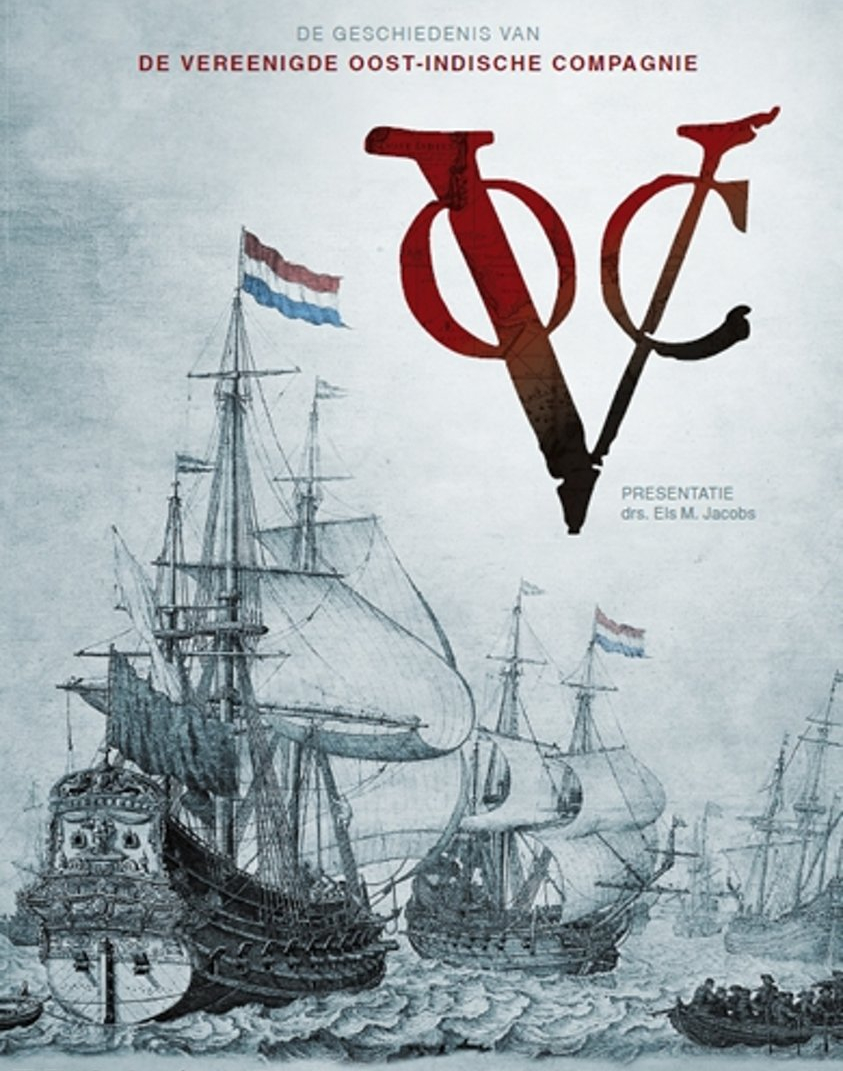
荷兰东印度公司,正式名称为联合东印度公司(荷兰语:Vereenigde Oostindische Compagnie,简称VOC),是荷兰历史上为向亚洲发展而成立的特许公司,成立于1602年3月20日,1798年解散,是世界第一家跨国公司、股份有限公司(指公开而非特权股份)。
其标帜以V串连O和C(上方的A为荷兰阿姆斯特丹的缩写,代表该船只或设备是阿姆斯特丹所派出,若为米德尔堡市派出者则加注M字,依此类推。)。在其成立将近200年间,总共向海外派出1,772艘船,约有100万人次的欧洲人搭乘4789航次的船班从荷兰前往亚洲地区。平均每个海外据点有25,000名员工、12,000名船员。
Die Niederländische Ostindien-Kompanie (niederländisch Vereenigde Oostindische Compagnie; Vereenigde Geoctroyeerde Oostindische Compagnie, abgekürzt VOC oder kurz Compagnie) war eine Ostindien-Kompanie, zu der sich am 20. März 1602 niederländische Kaufmannskompanien zusammenschlossen, um die Konkurrenz untereinander auszuschalten. Die VOC erhielt vom niederländischen Staat Handelsmonopole sowie Hoheitsrechte in Landerwerb, Kriegsführung und Festungsbau. Sie war eines der größten Handelsunternehmen des 17. und 18. Jahrhunderts.
Die VOC hatte ihren Hauptsitz in Amsterdam und Middelburg. Das Hauptquartier der Handelsschifffahrt befand sich in Batavia, der heutigen indonesischen Hauptstadt Jakarta auf Java. Weitere Niederlassungen wurden auf anderen Inseln des heutigen Indonesiens gegründet. Ein Handelsposten lag auch auf Deshima, einer künstlichen Insel vor der Küste der japanischen Stadt Nagasaki und weitere in Persien, Bengalen, heute Teil von Bangladesch und Indien, Ceylon, Formosa, Kapstadt und Südindien.
Die wirtschaftliche Stärke der VOC beruhte vor allem auf der Kontrolle der Gewürzroute von Hinterindien nach Europa, womit sie einen Teil des lukrativen Indienhandels beherrschte. Das in sechs Kammern (Kamers) strukturierte Unternehmen war das erste, das Aktien ausgab. Nach dem Vierten Englisch-Niederländischen Krieg von 1780 bis 1784 kam die Kompanie in finanzielle Schwierigkeiten und wurde 1798 liquidiert.
Während zweier Jahrhunderte des in vielen Bereichen monopolisierten Handels hatte die VOC circa 4700 Schiffe unter Segel, auf denen insgesamt zirka eine Million Menschen befördert wurden. Dabei entfällt auf das erste Jahrhundert zirka ein Drittel, auf das zweite zwei Drittel von beiden Zahlen. Der Handelswert der nach Europa transportierten Waren betrug im ersten Jahrhundert bis 1700 bereits 577 Millionen Gulden und im zweiten bis 1795 1,6 Milliarden Gulden. Die Konkurrentin der VOC, die 1600 in London gegründete Englische Ostindien-Kompanie (EIC), später Britische Ostindien-Kompanie (BEIC), konnte sich nicht gegen die VOC durchsetzen. Lediglich gegen Ende des 17. Jahrhunderts gab es eine kurze Phase, während derer die EIC/BEIC zu einer ernstzunehmenden Konkurrentin erstarkt war.

